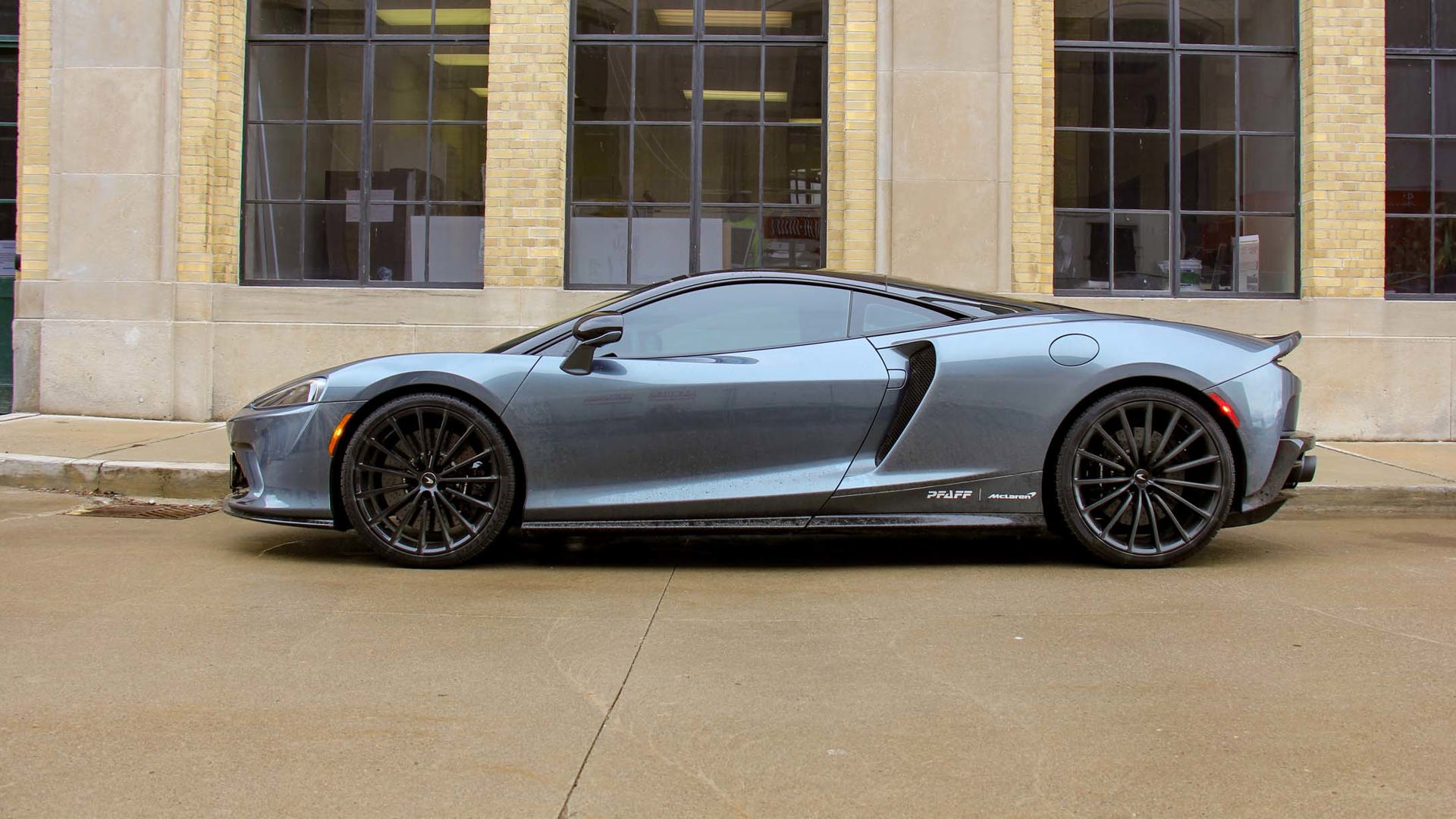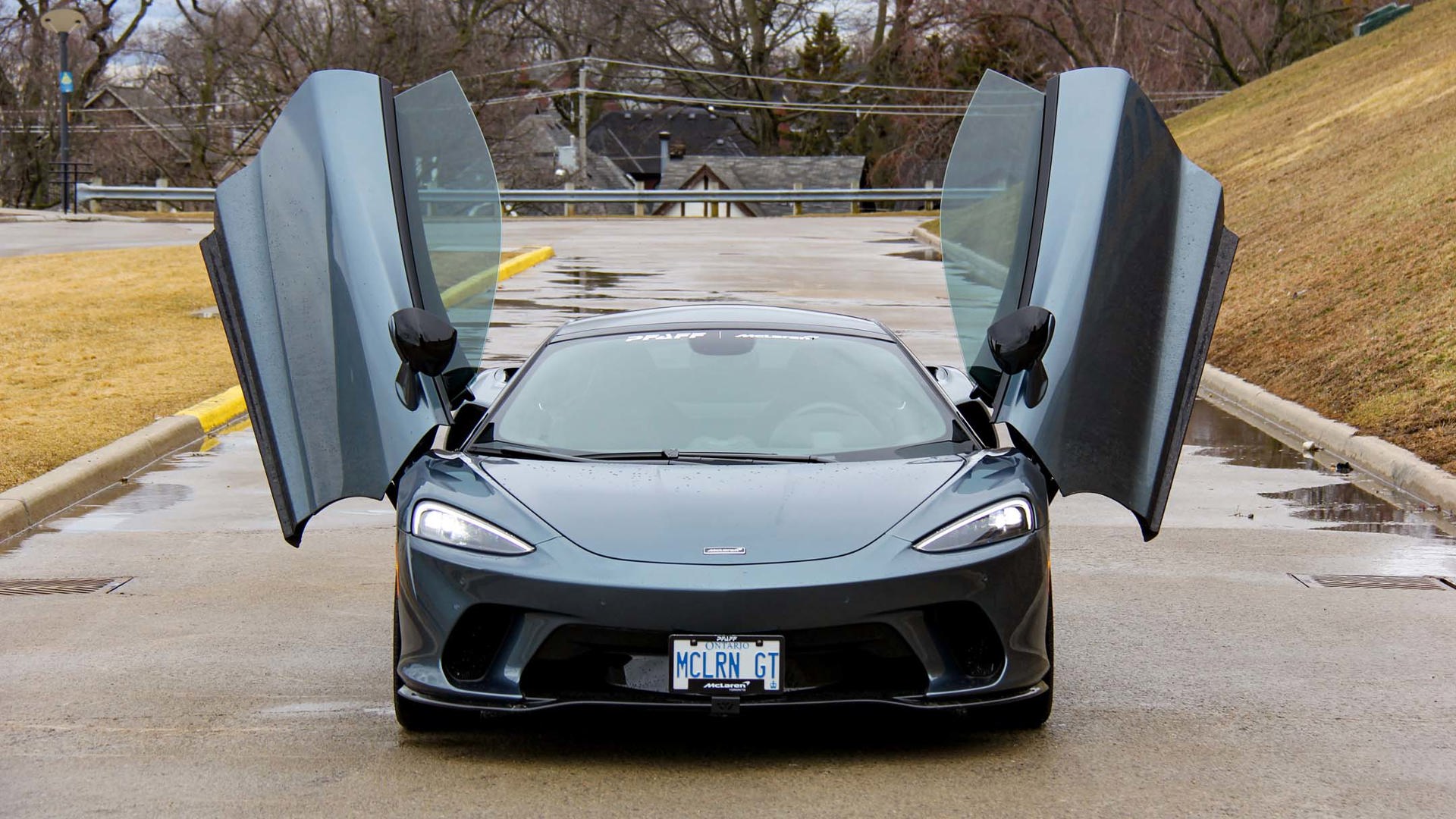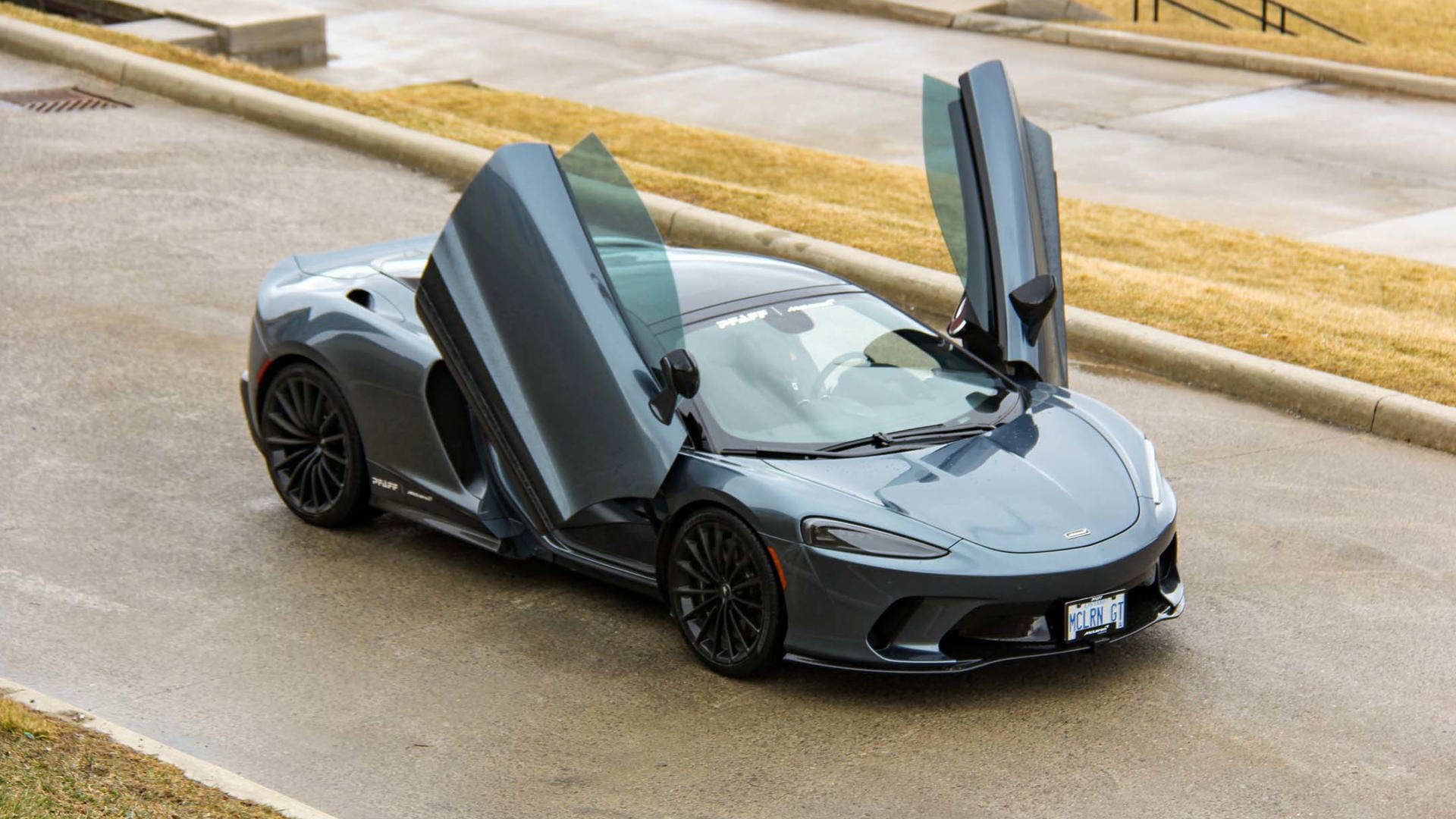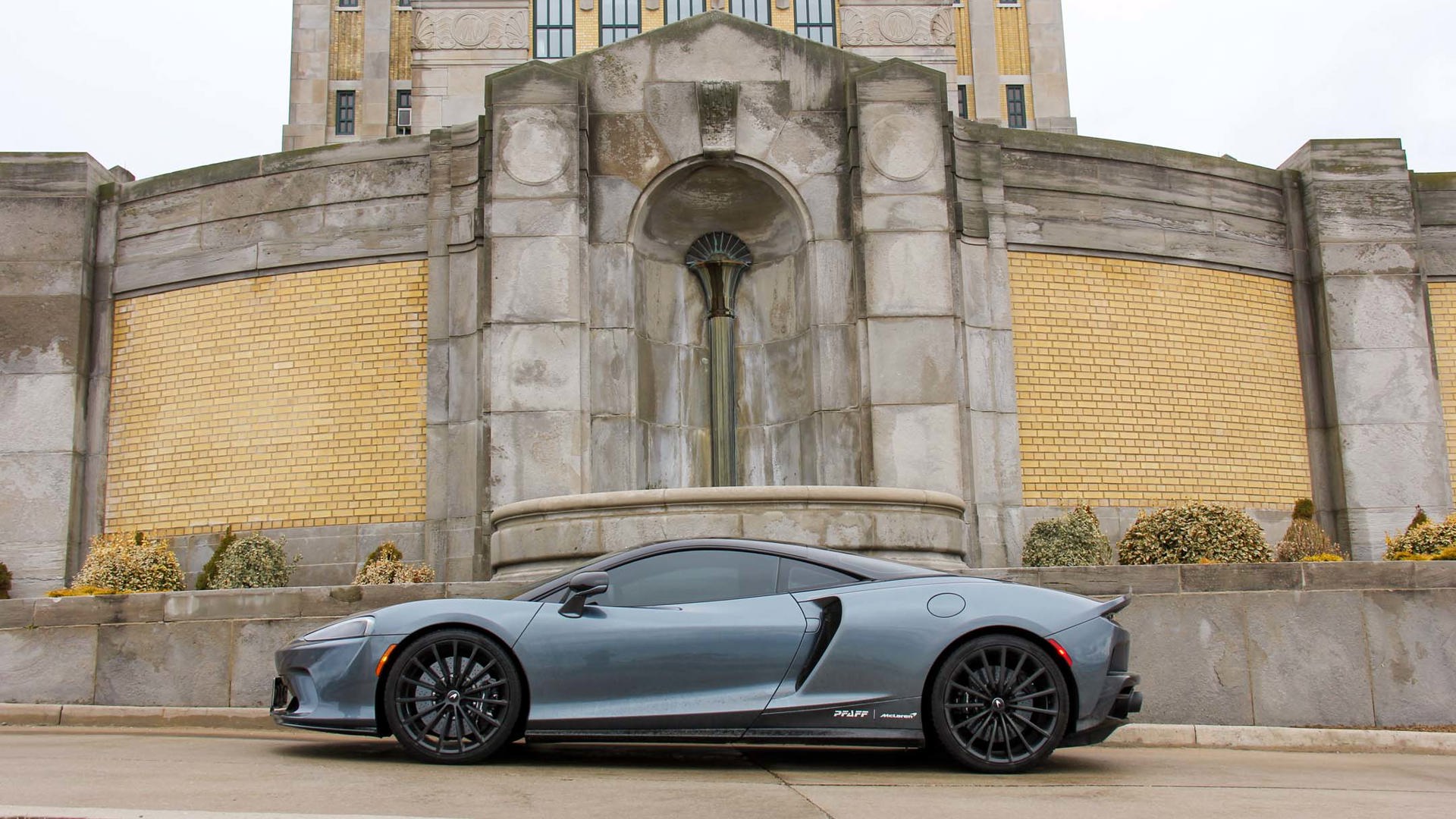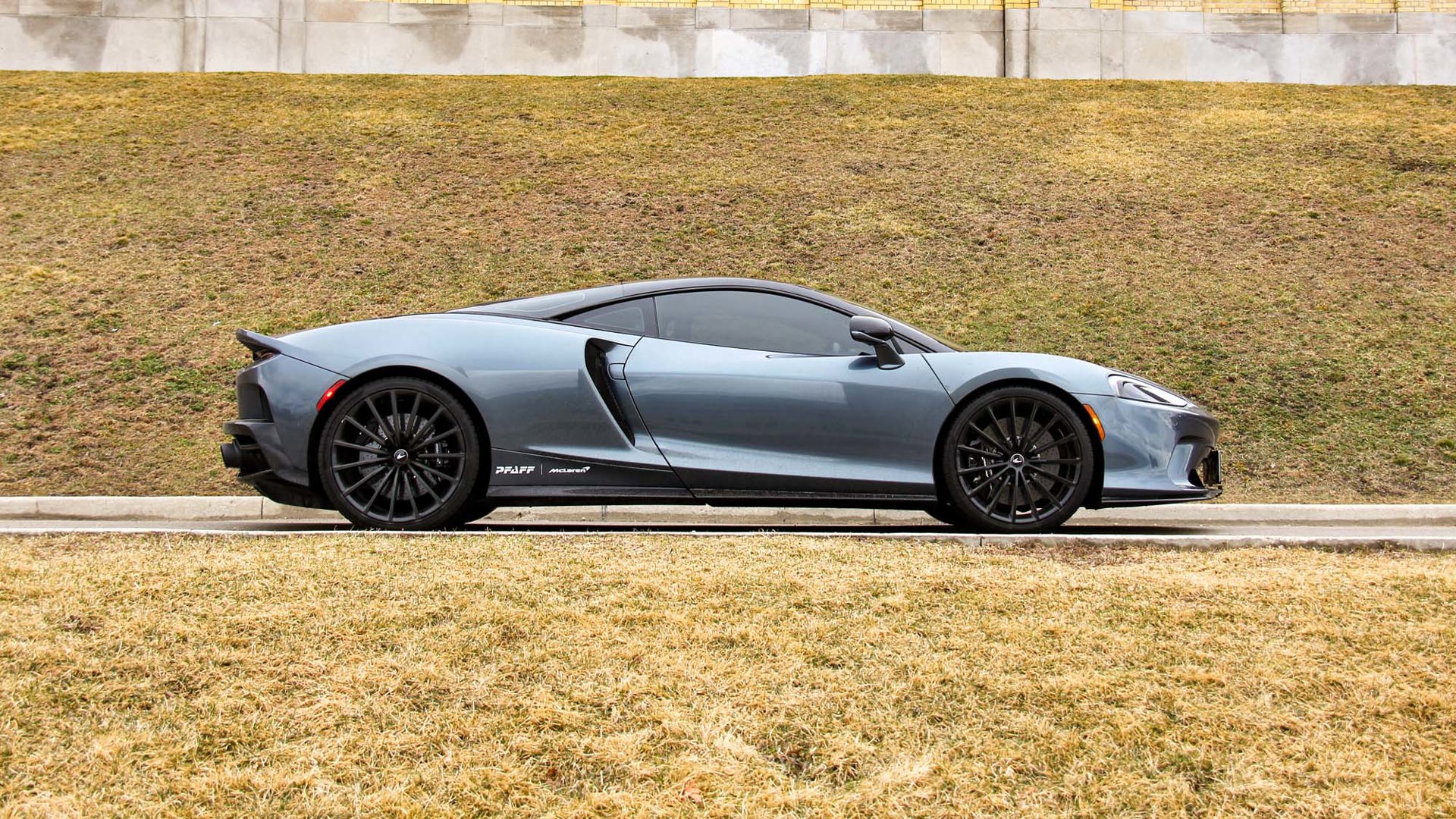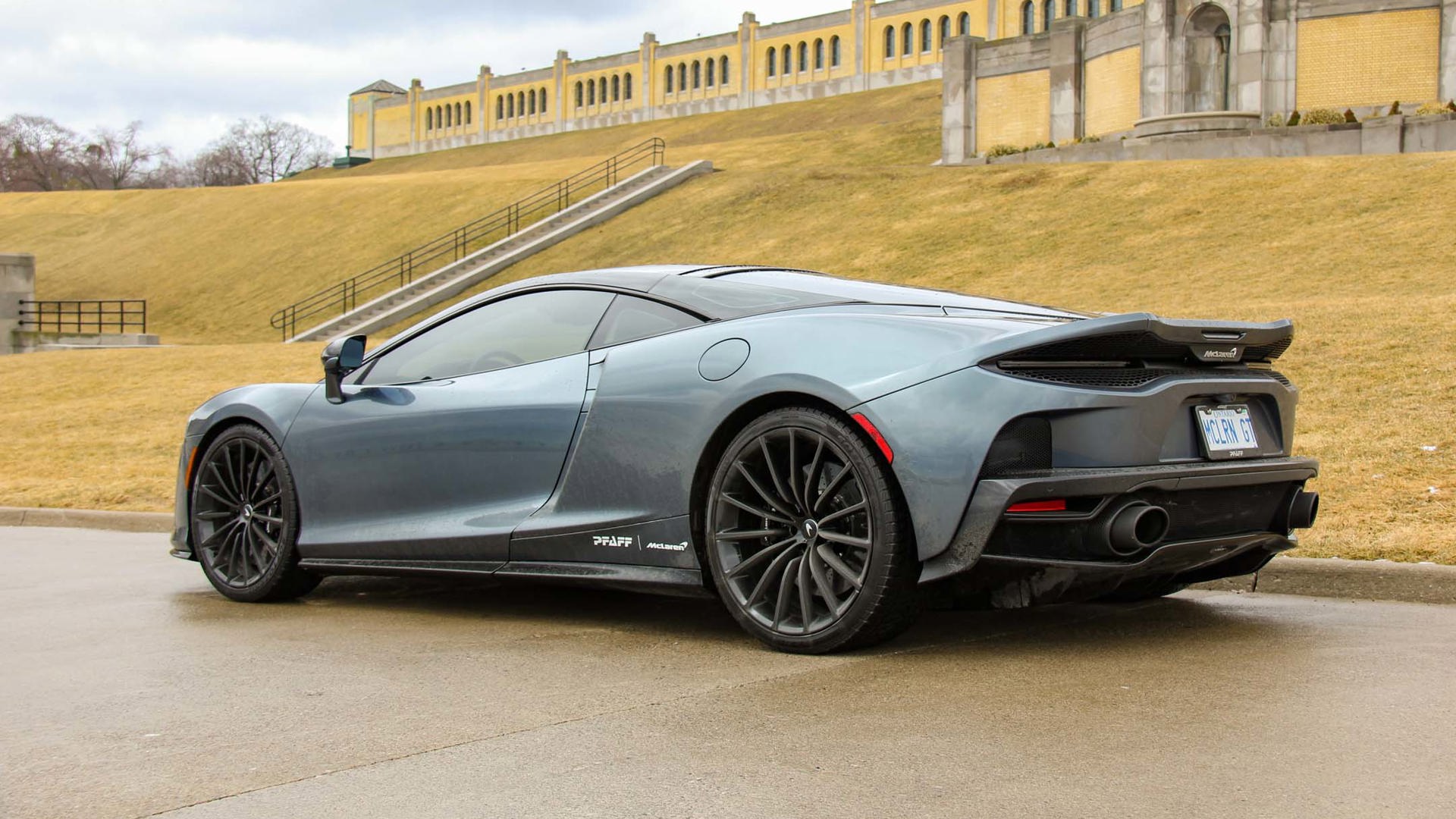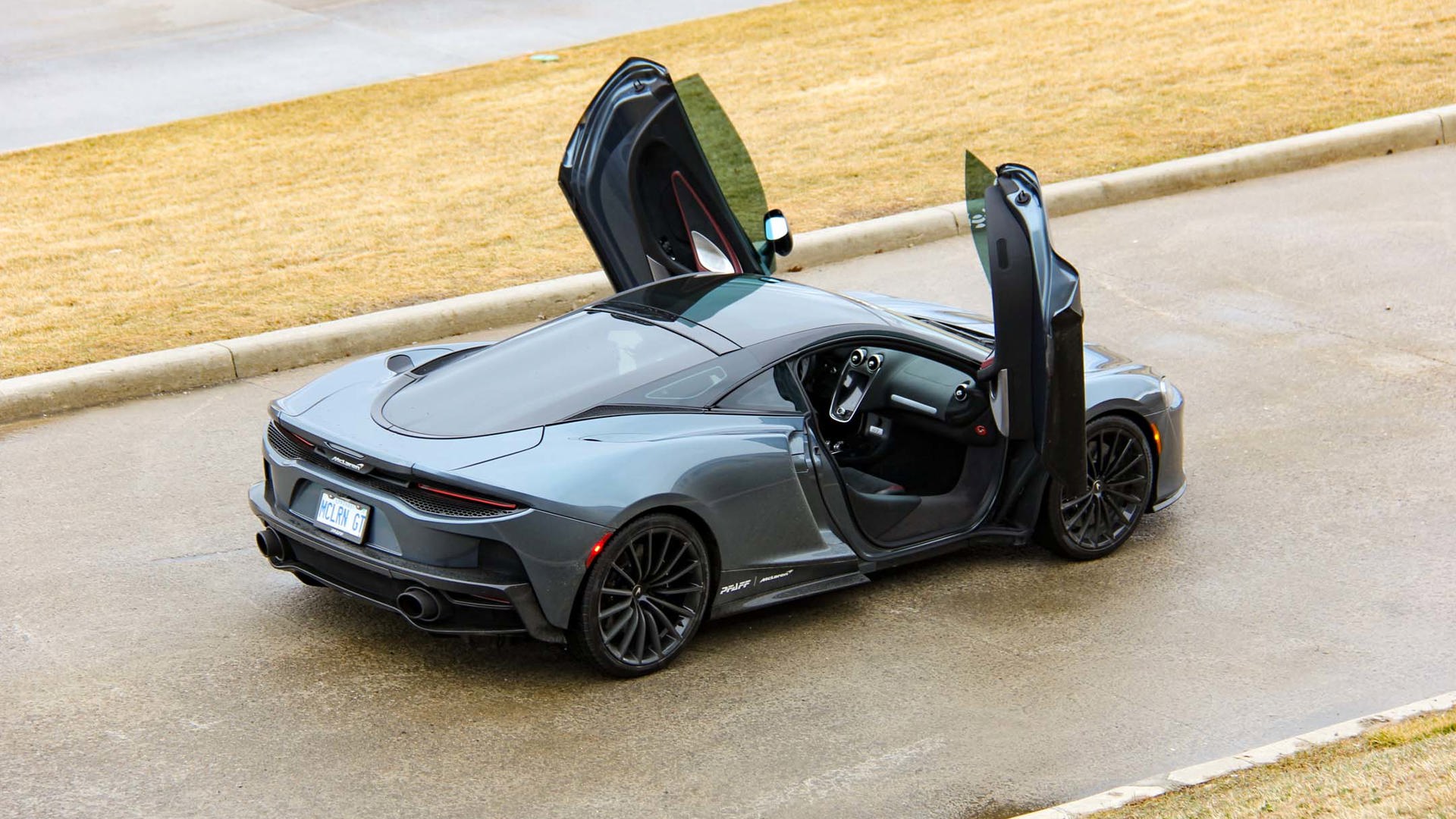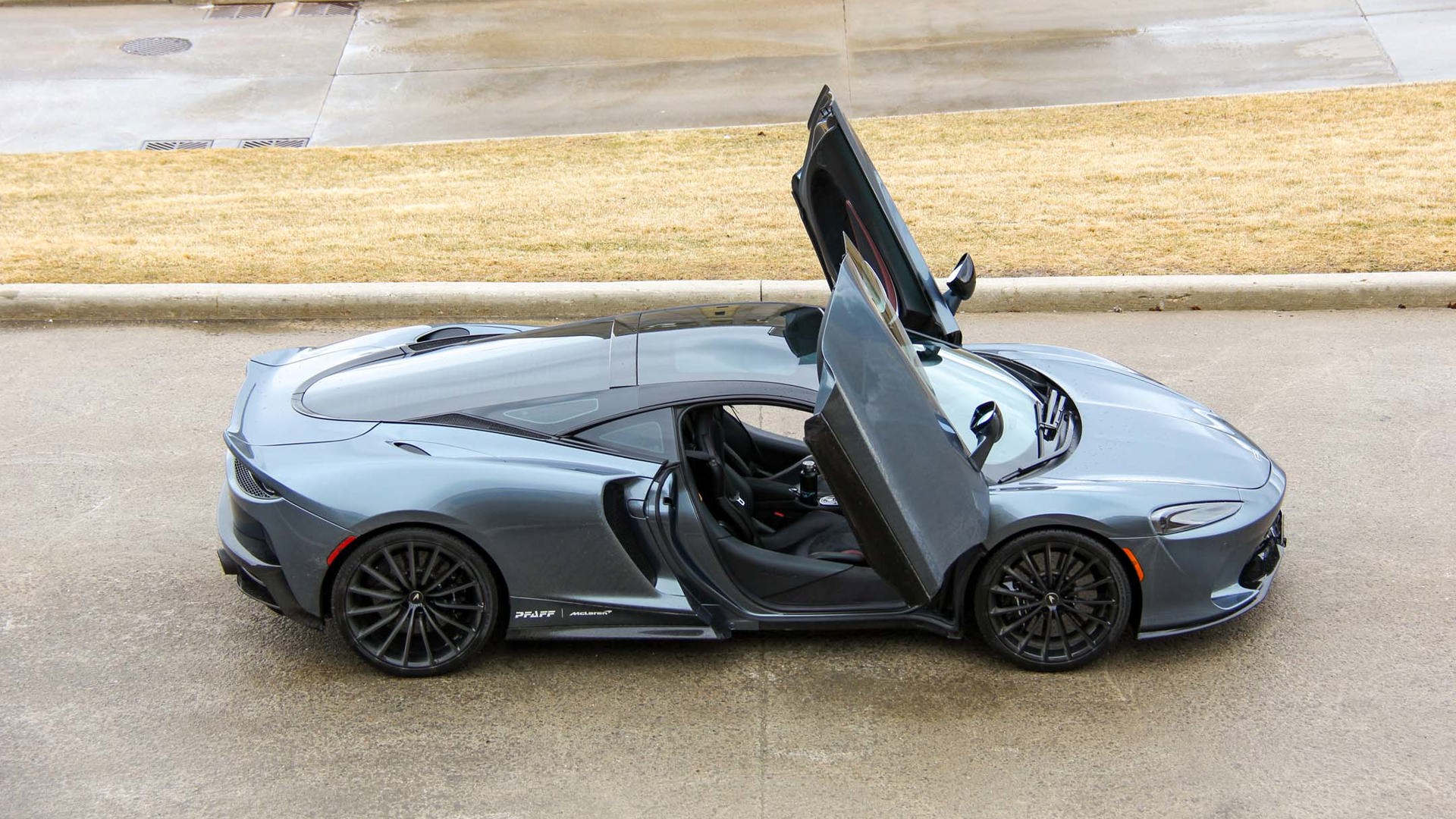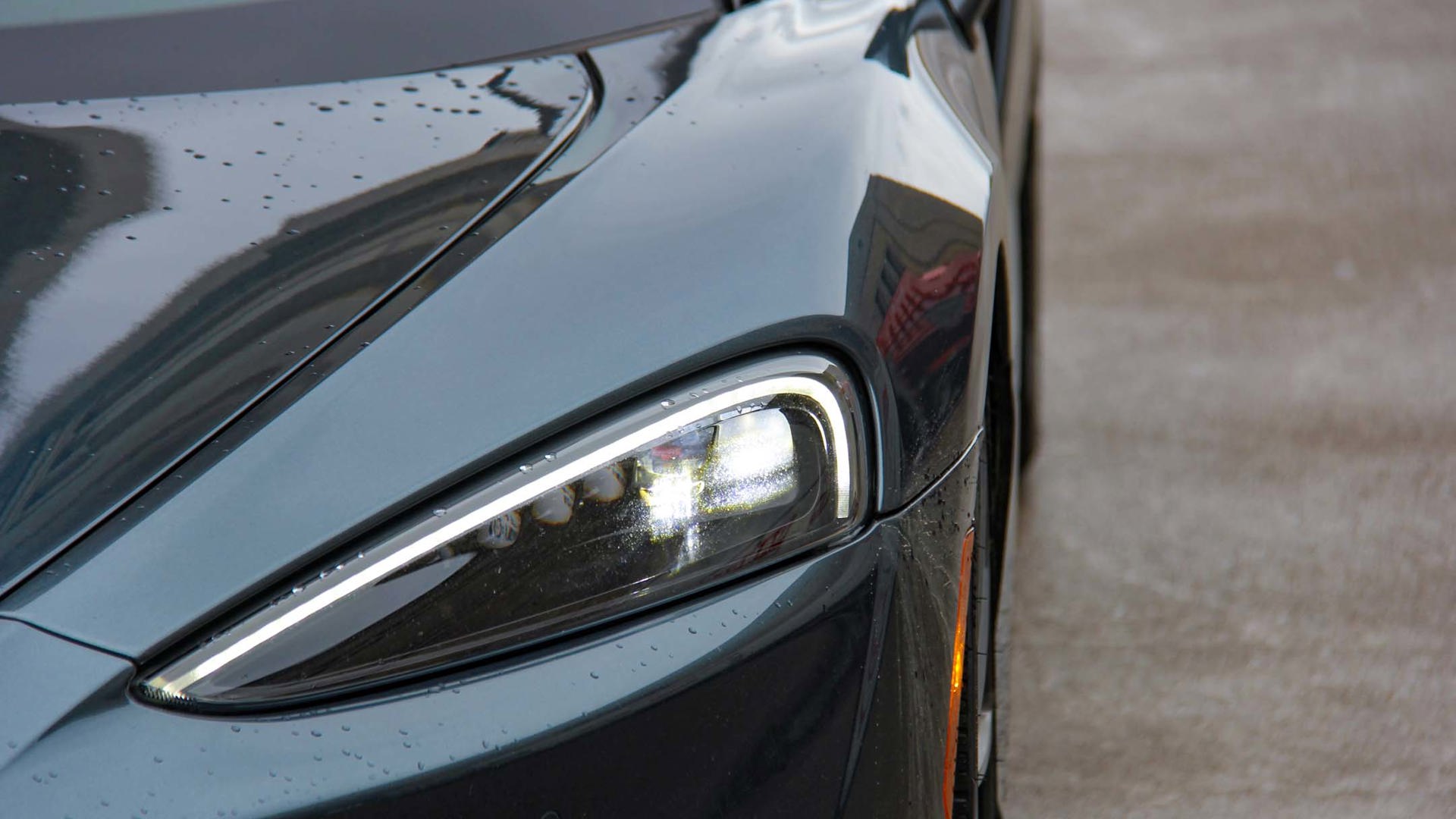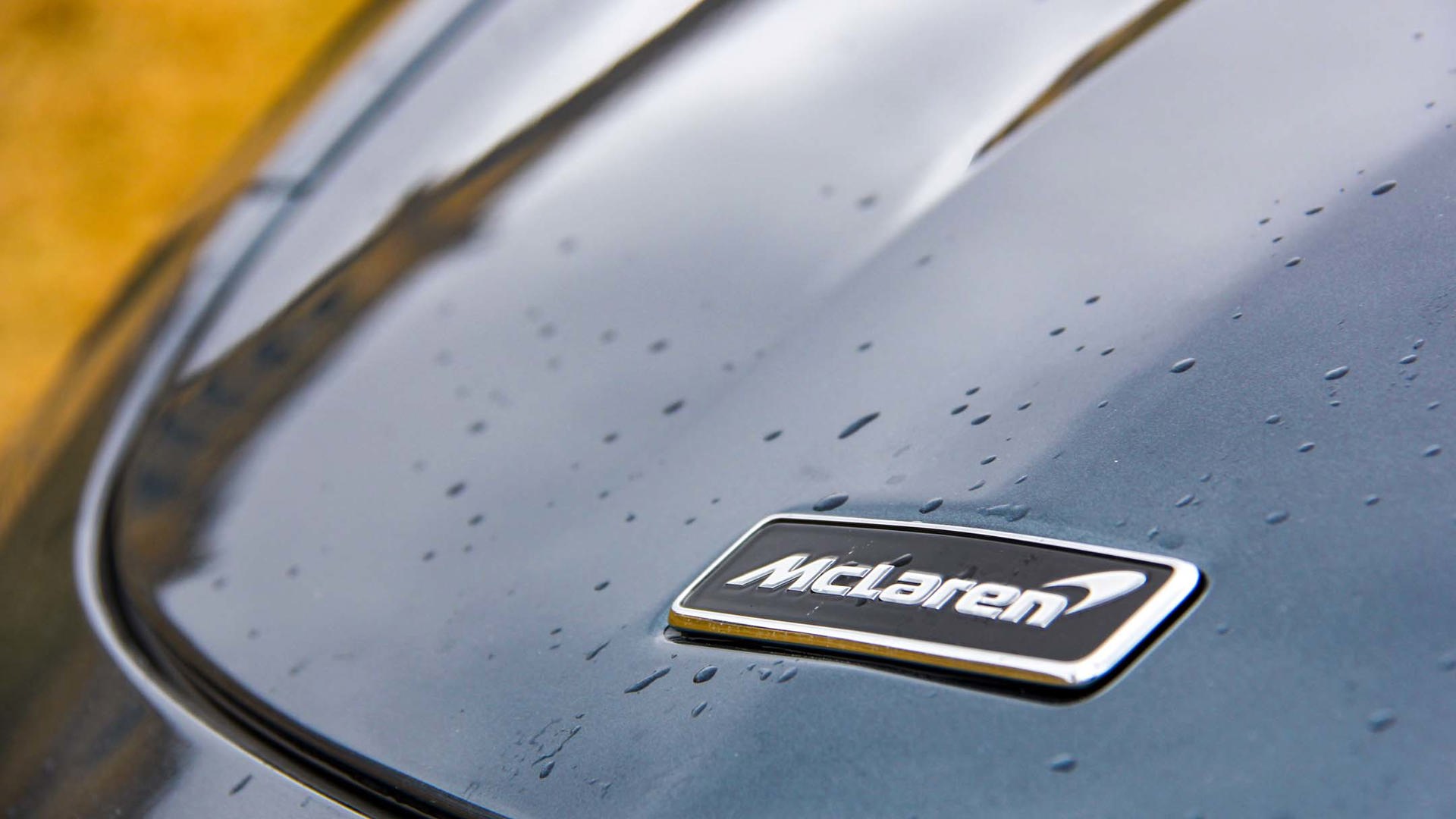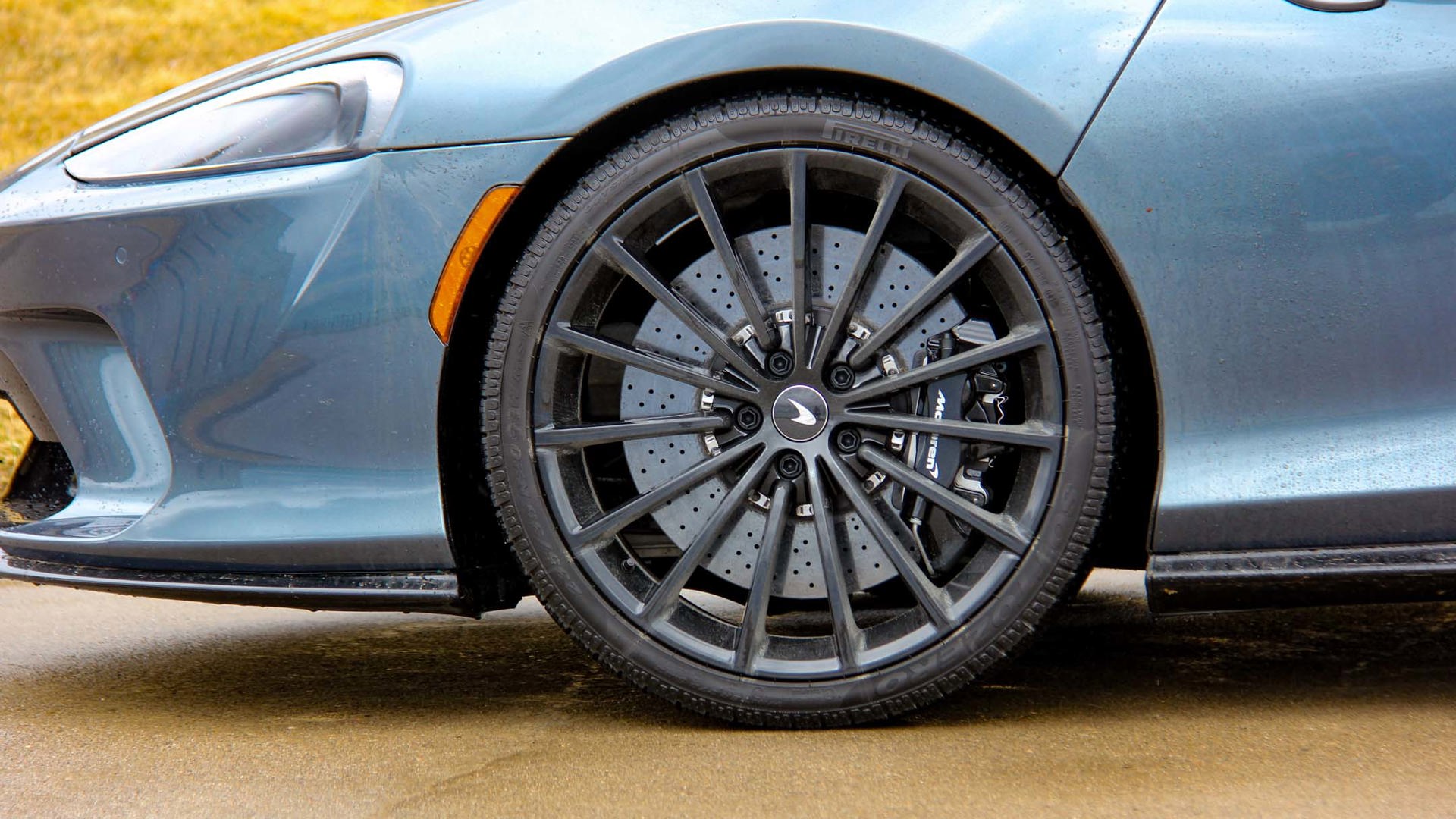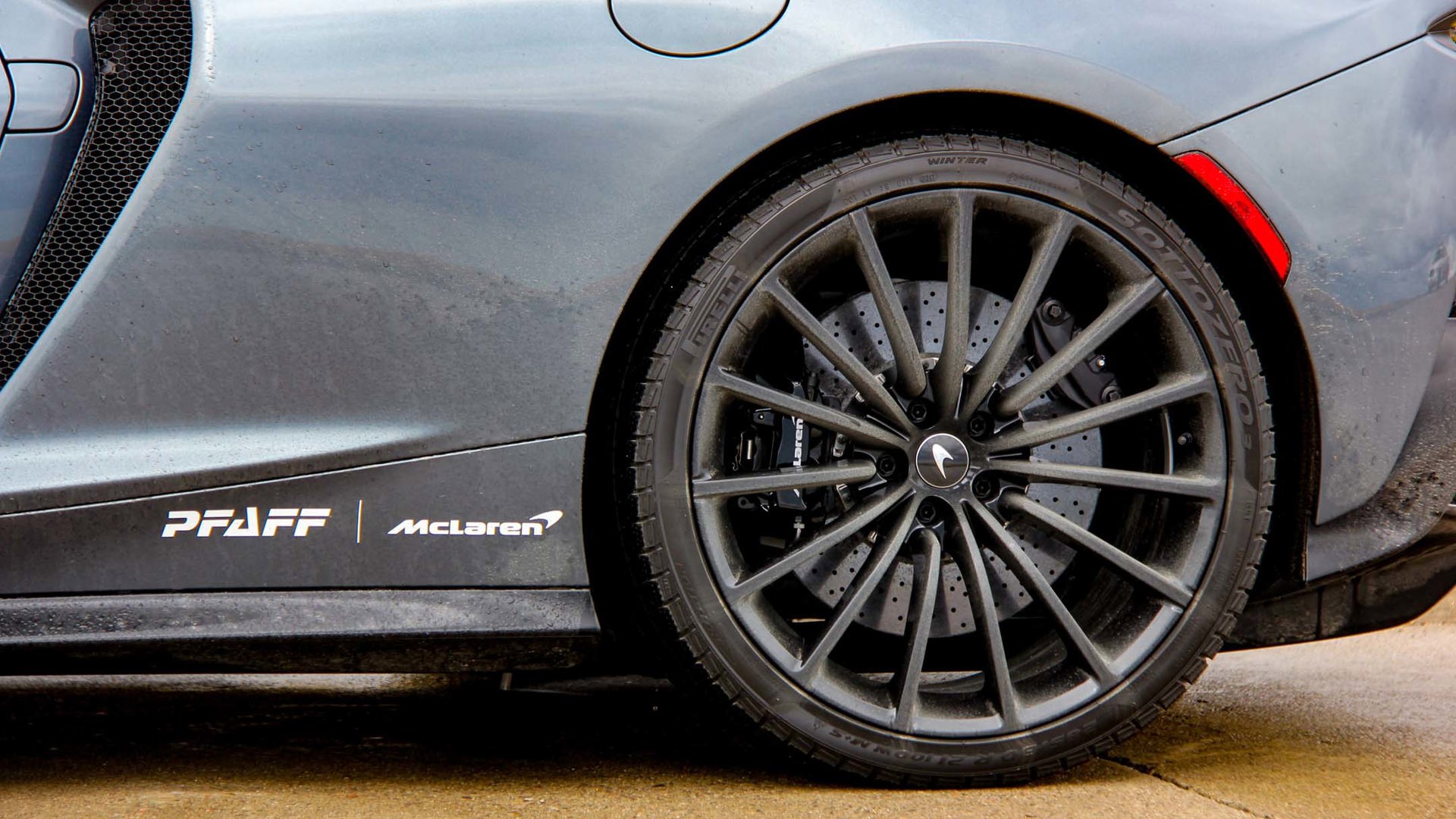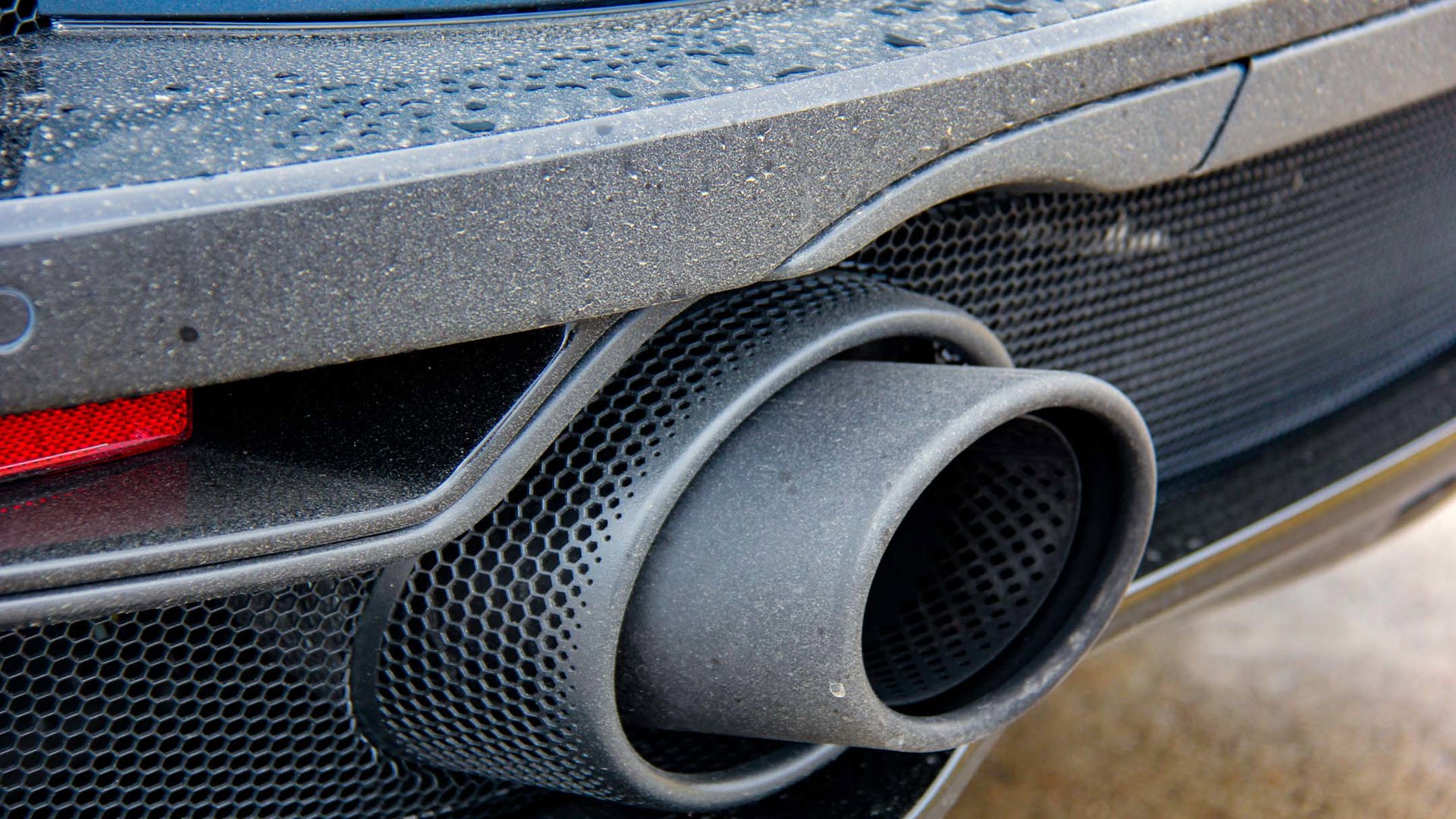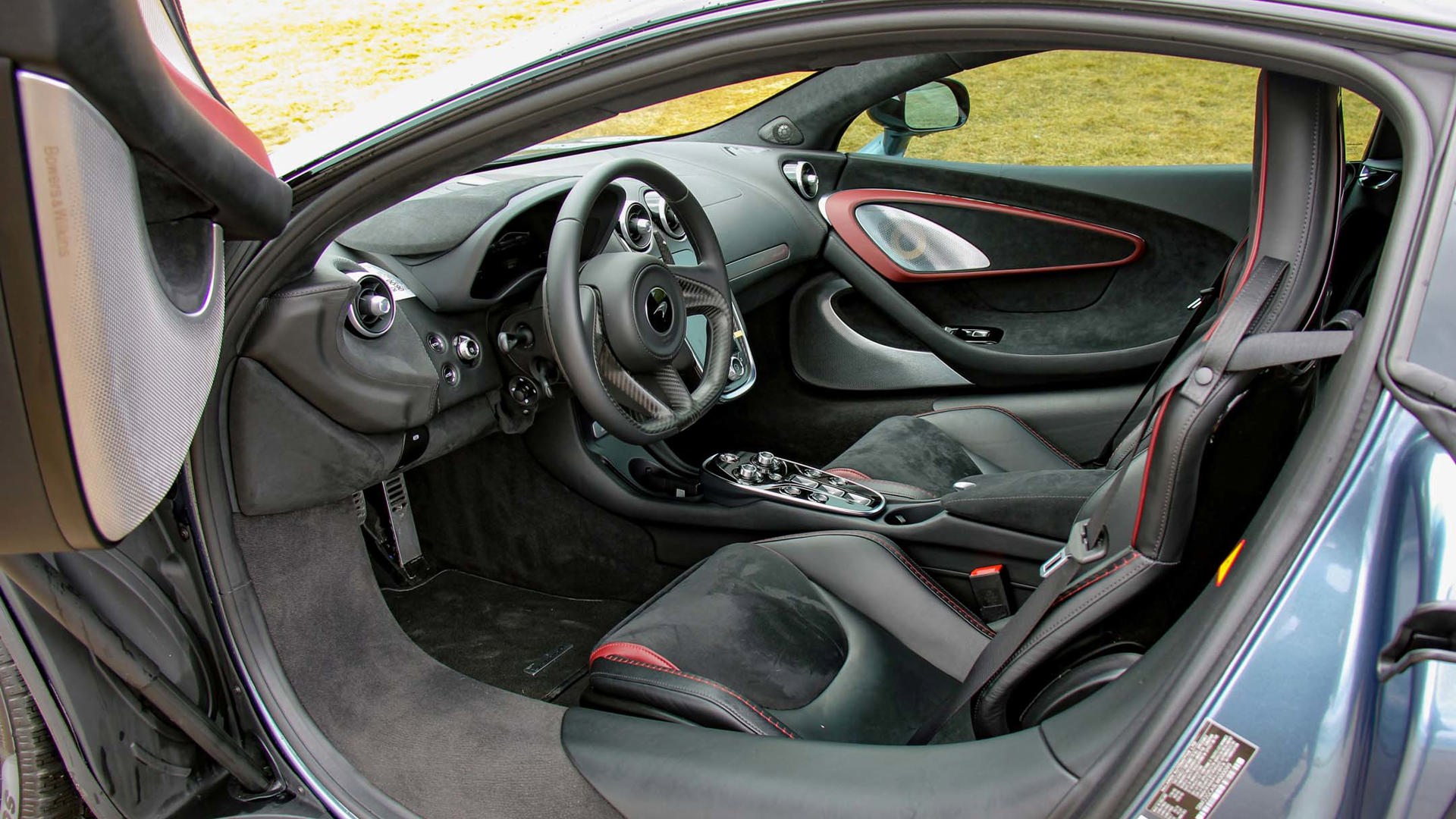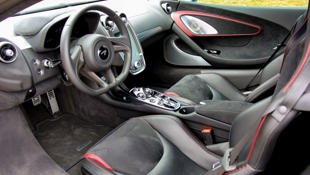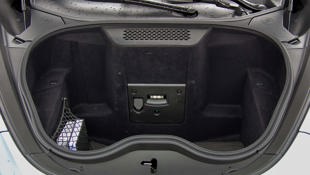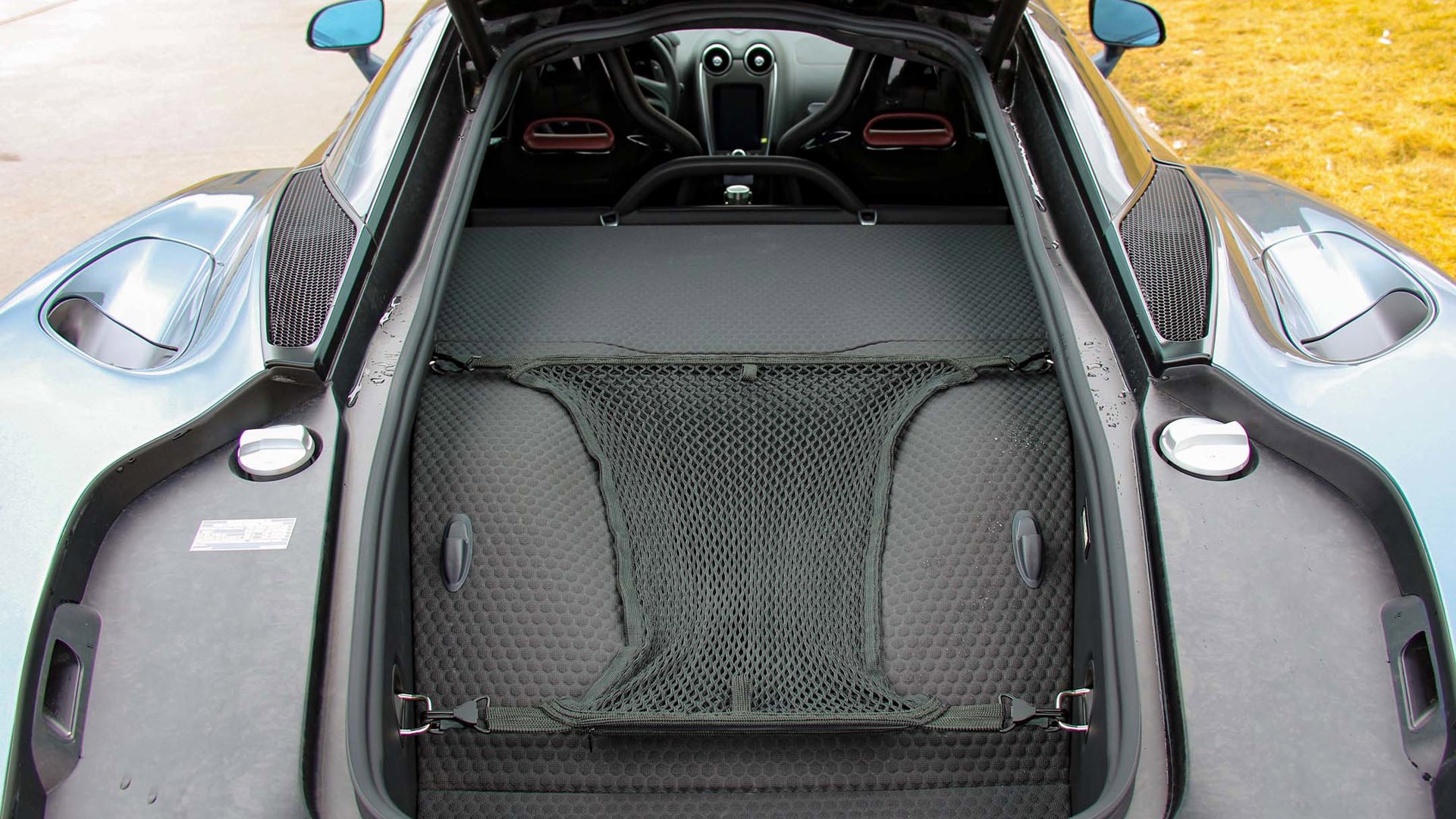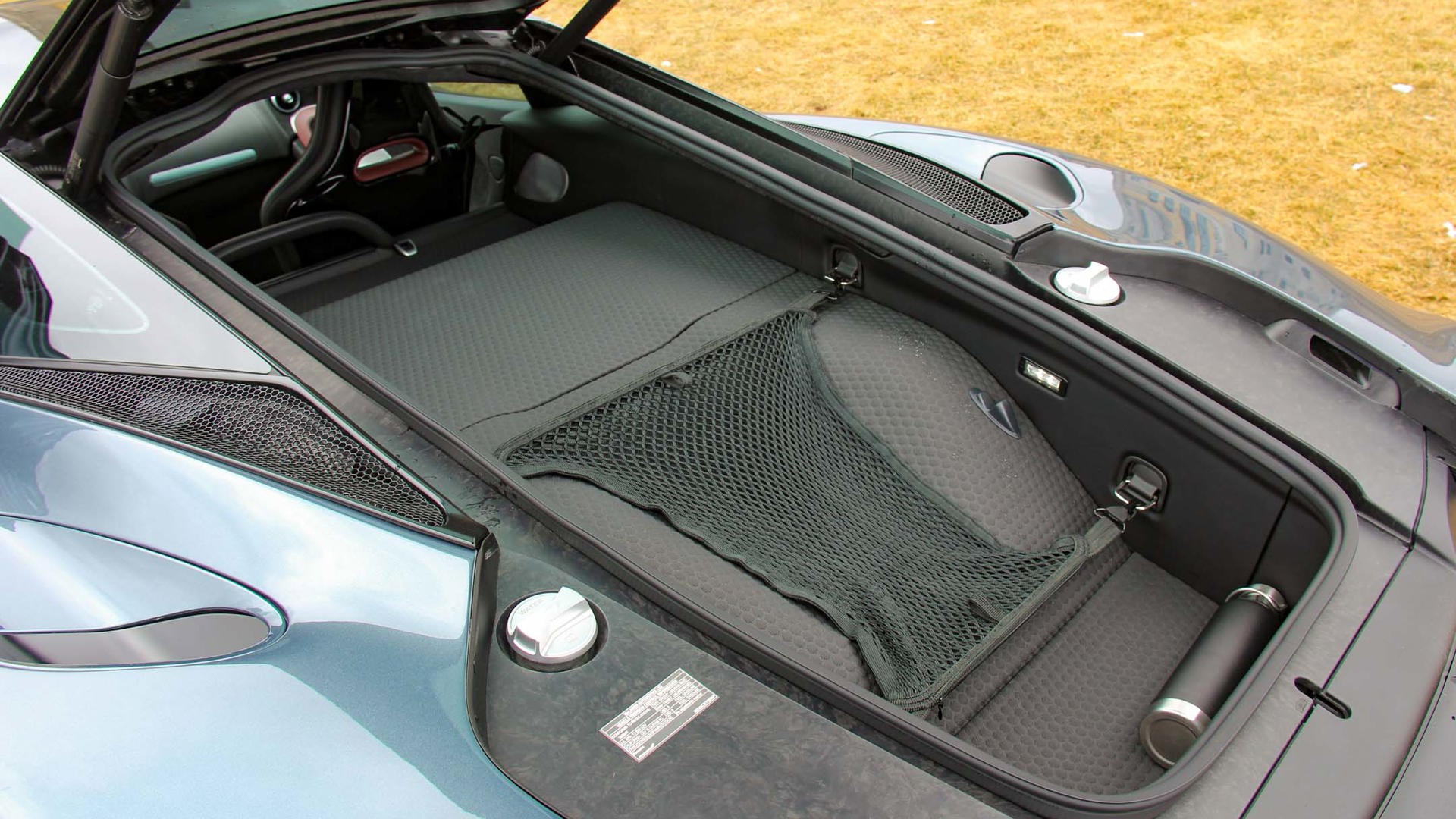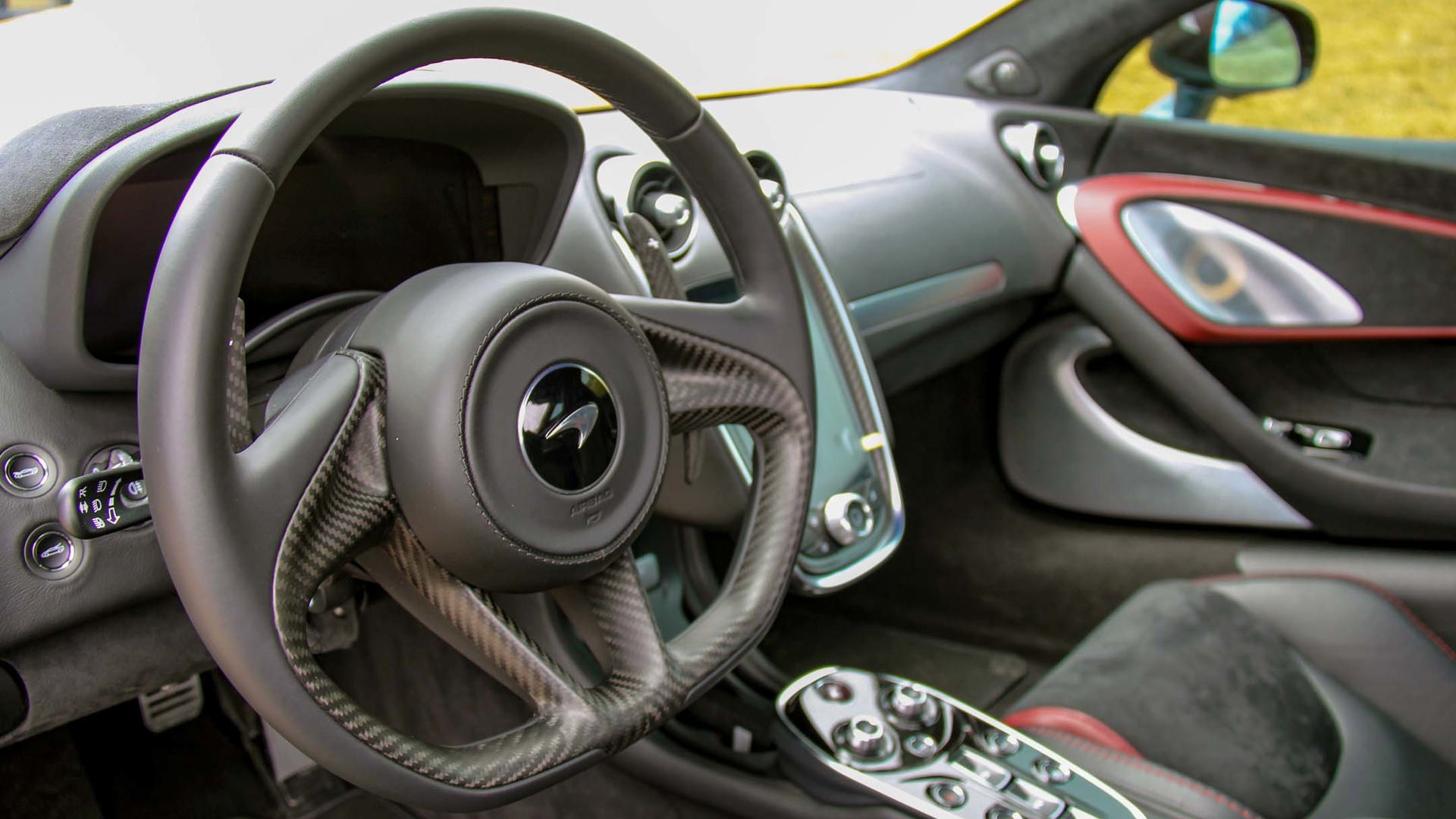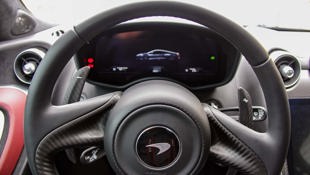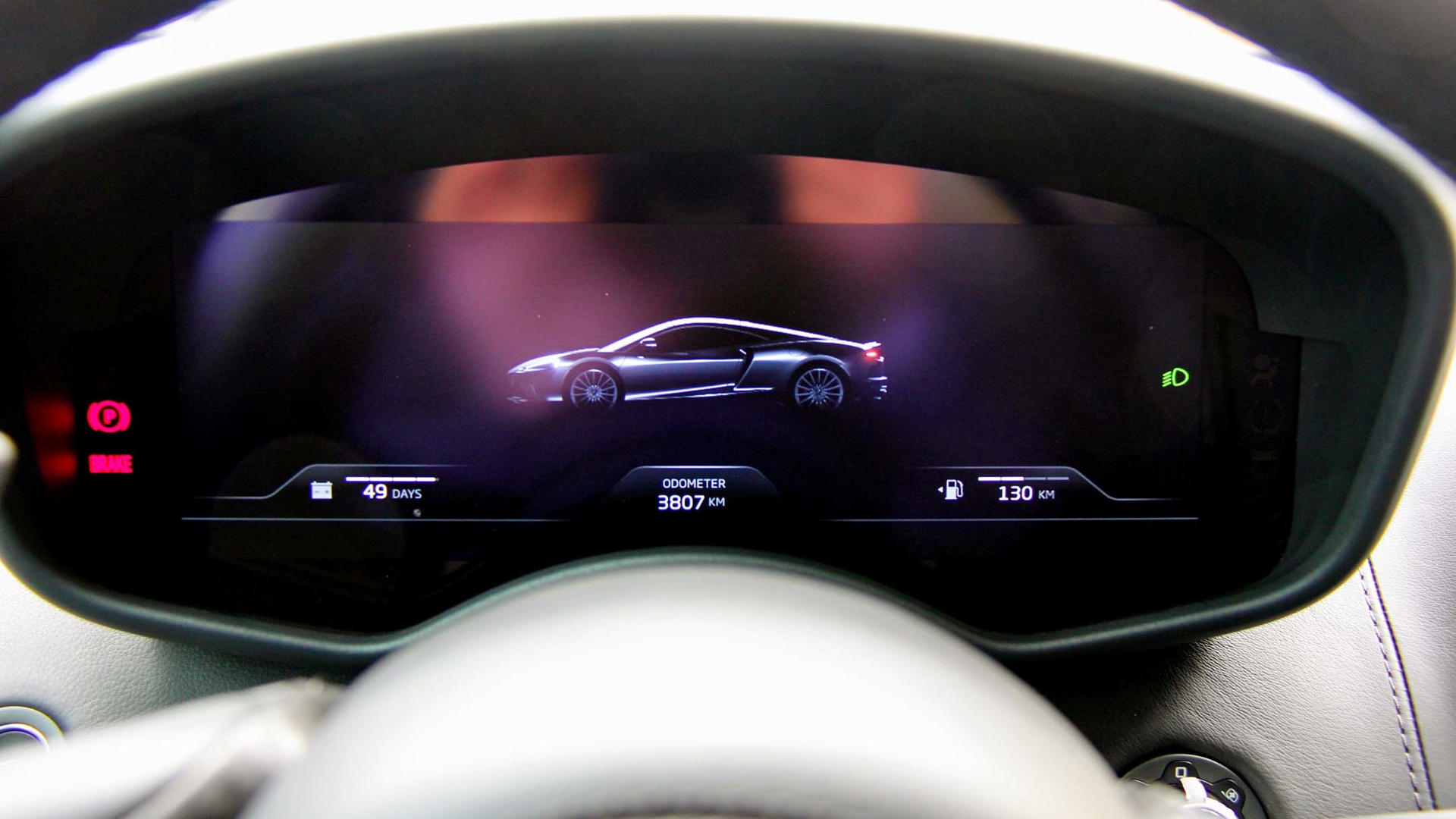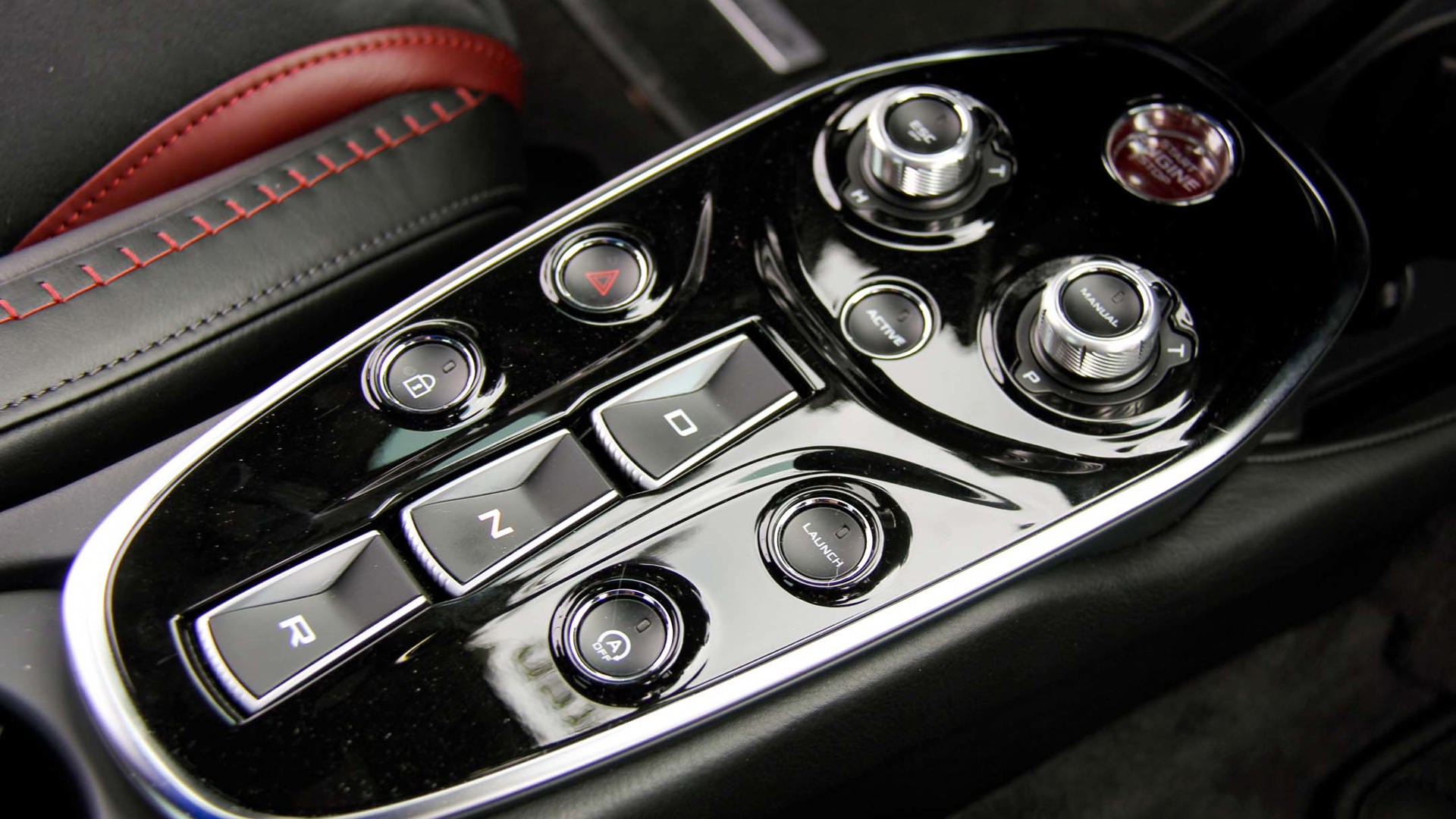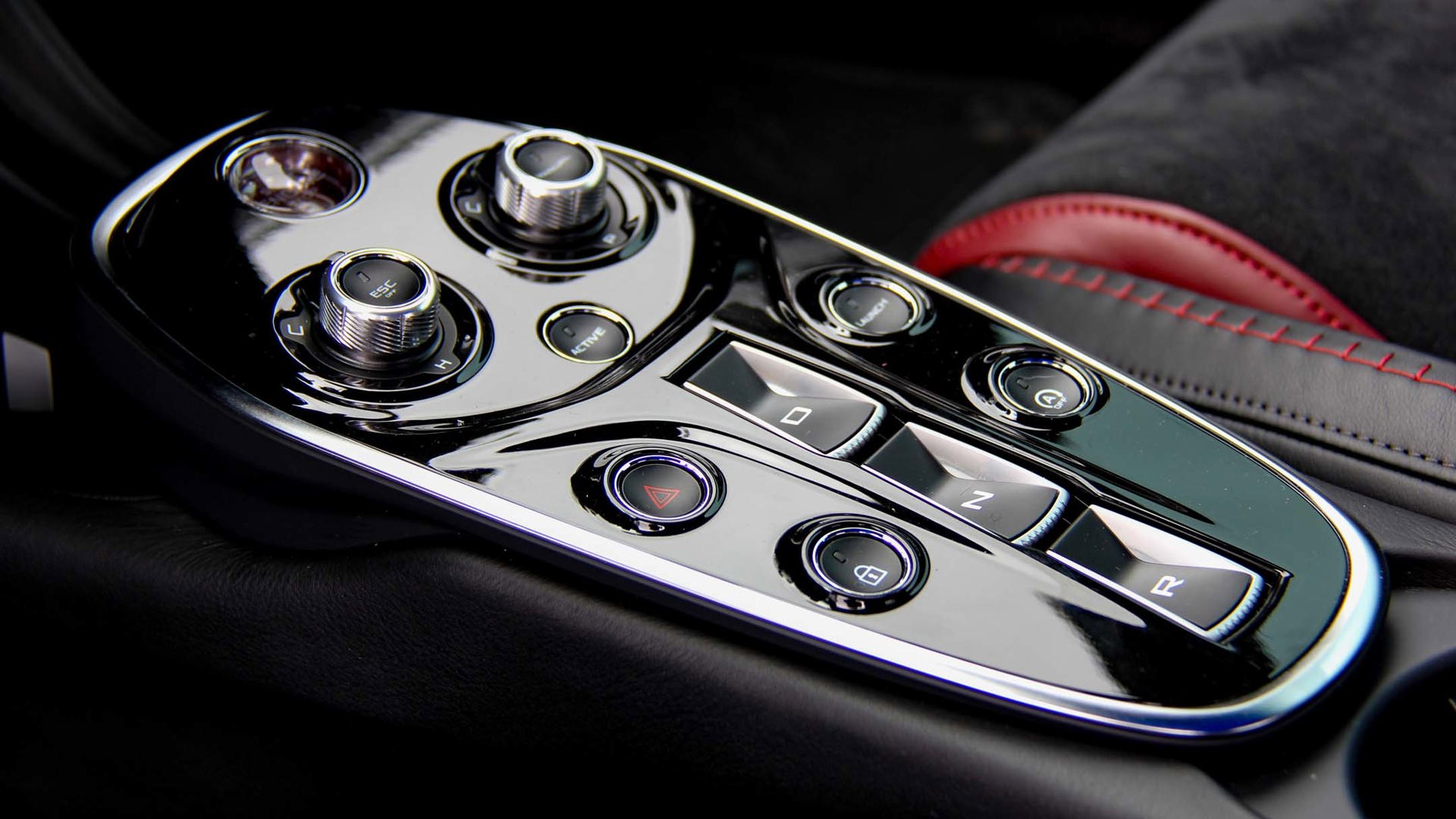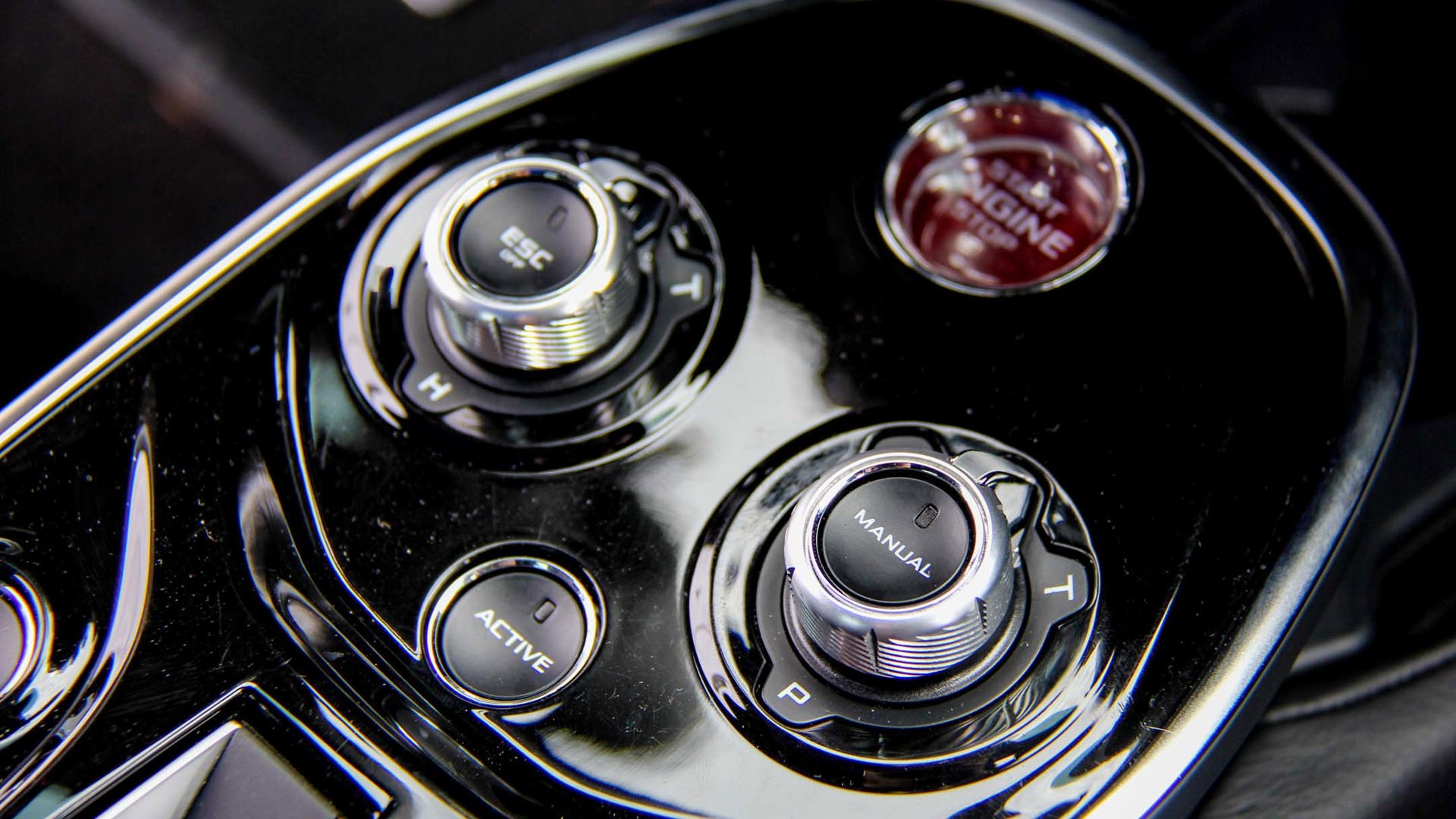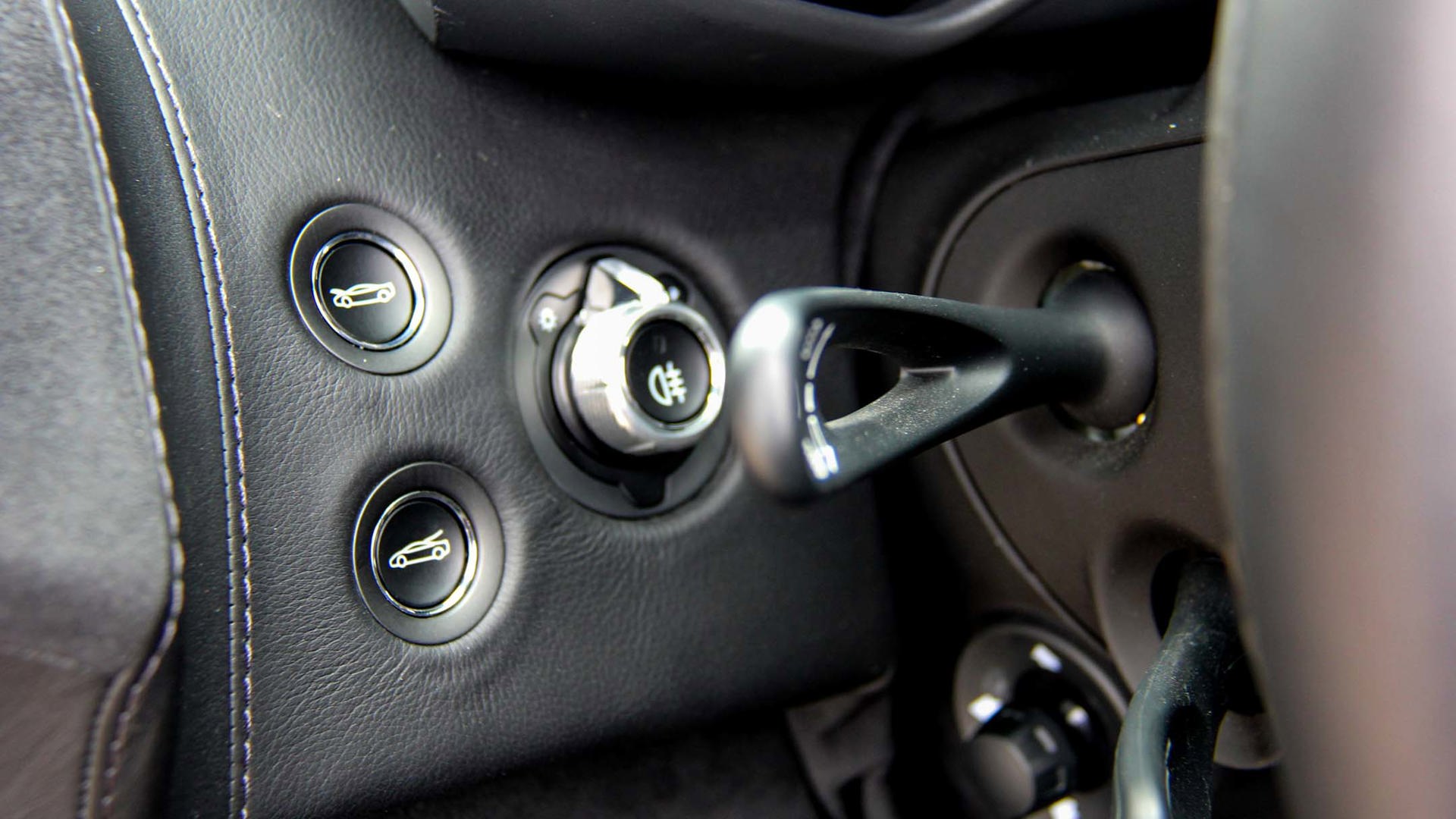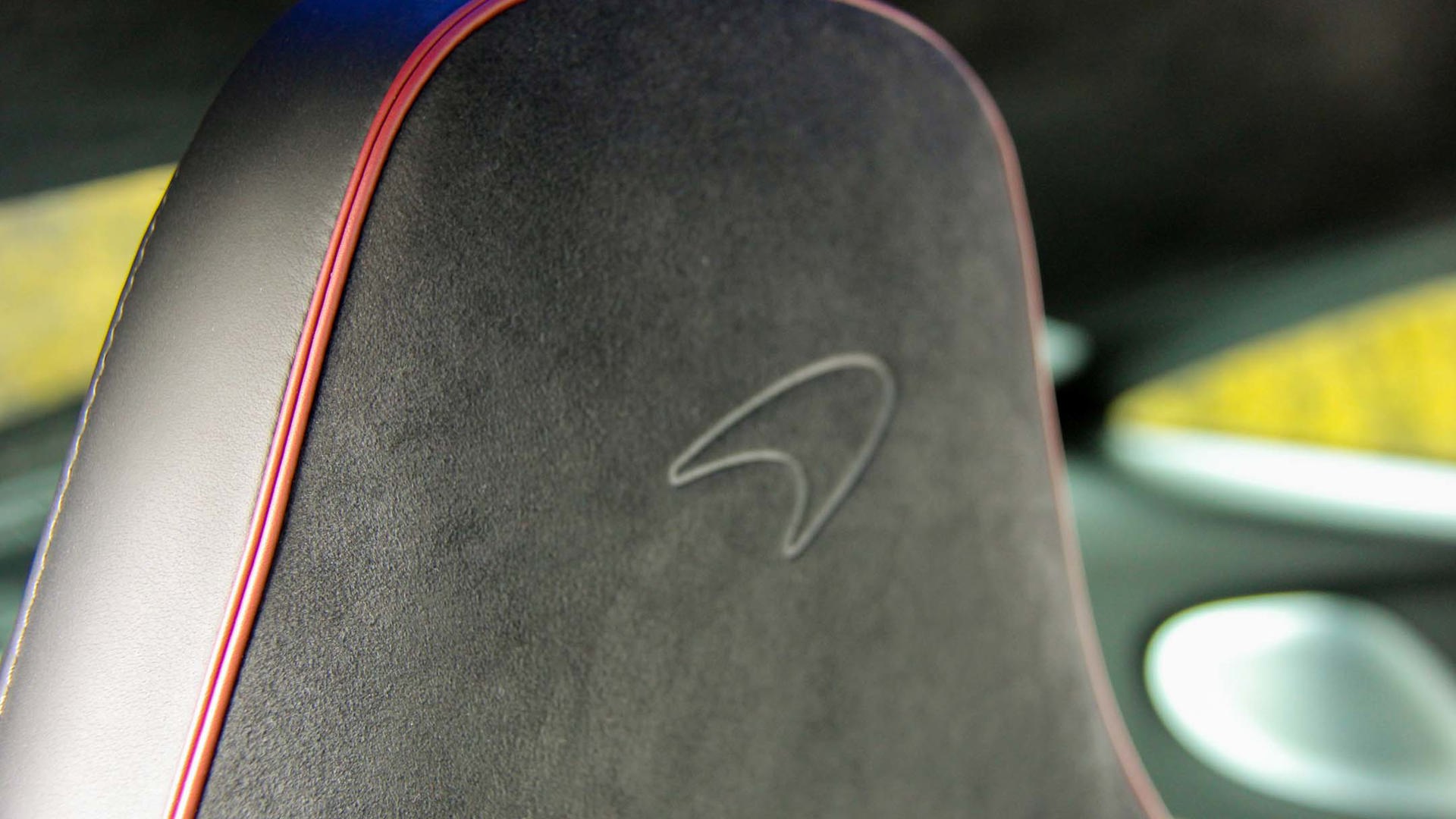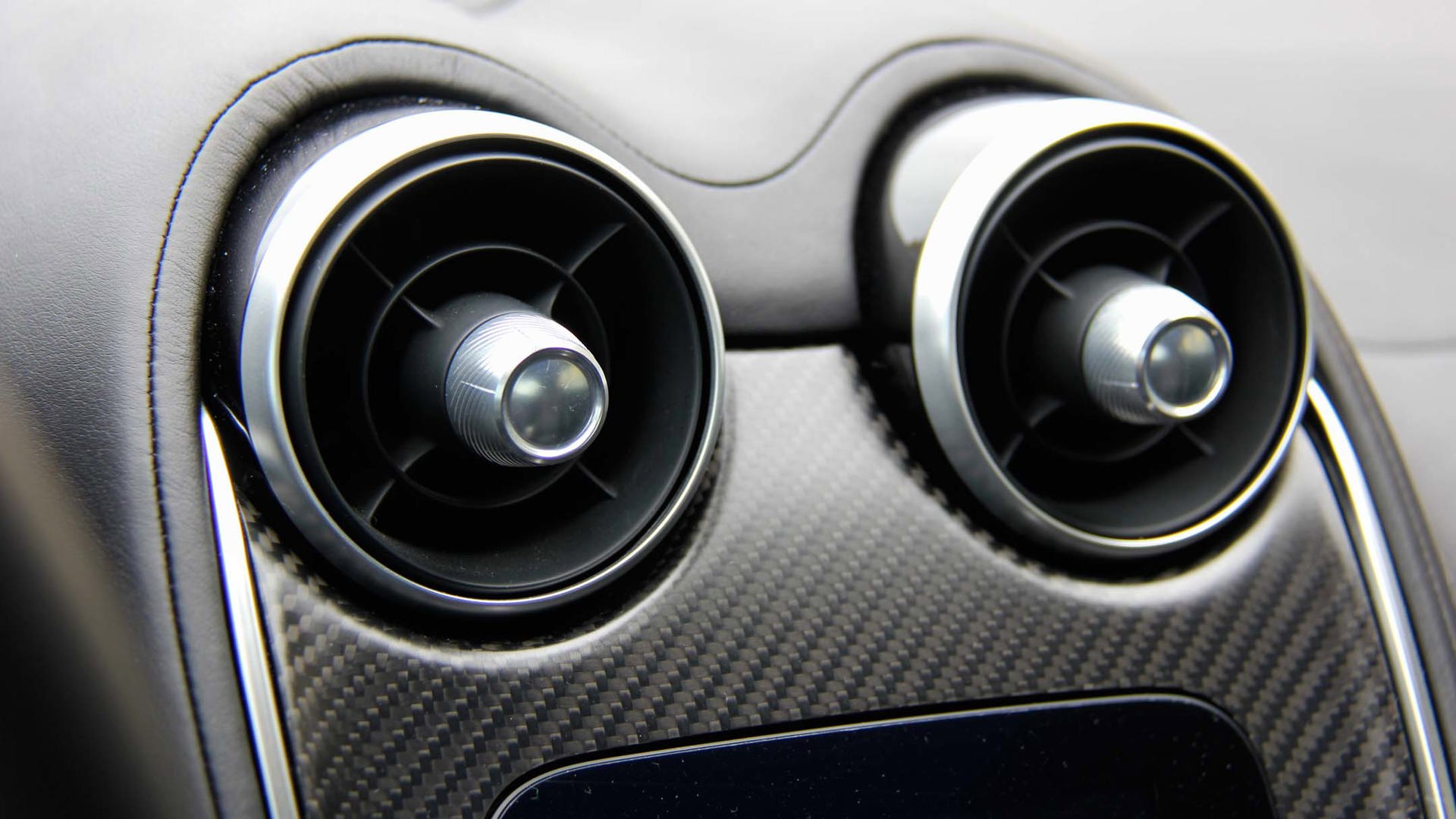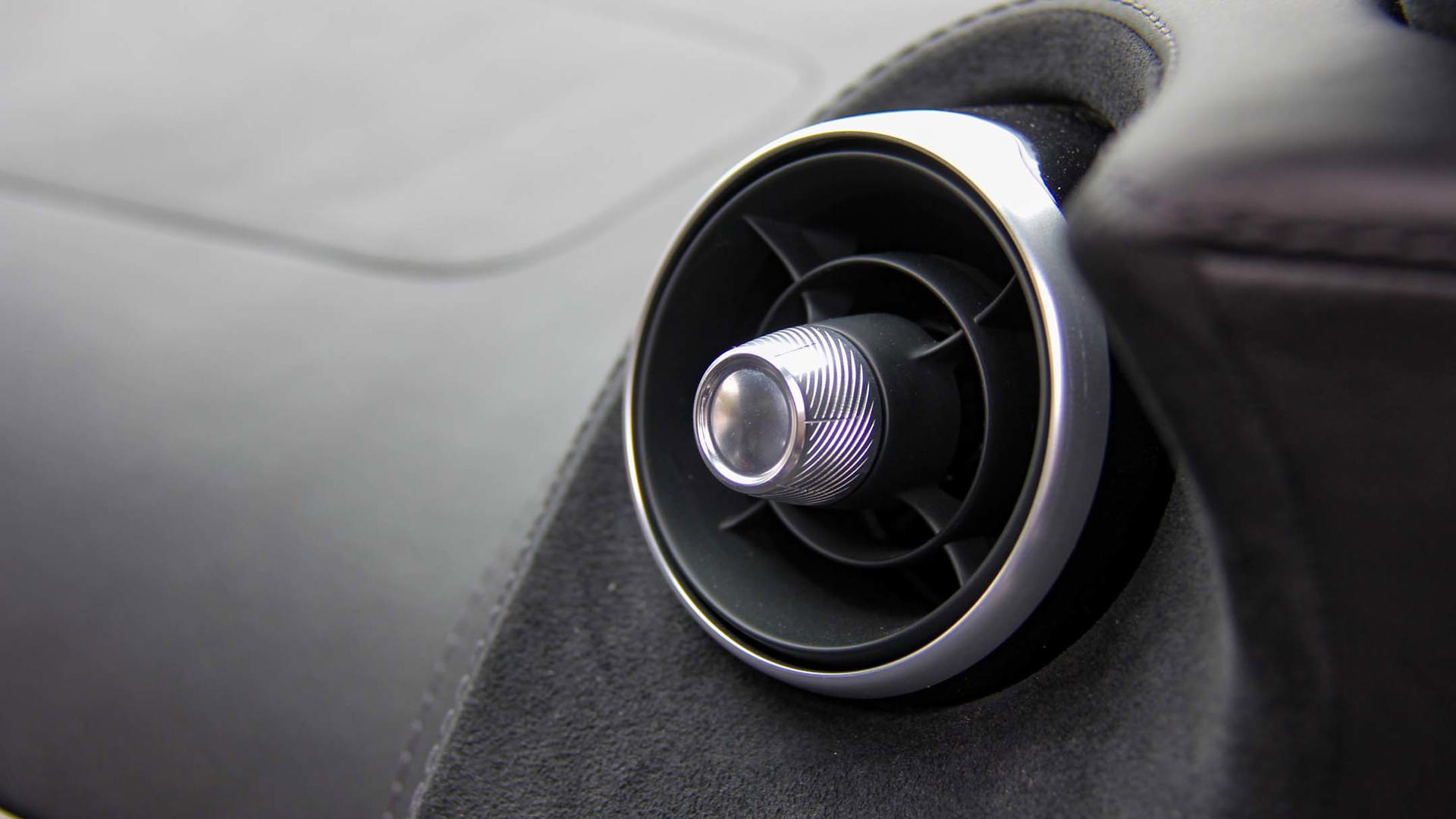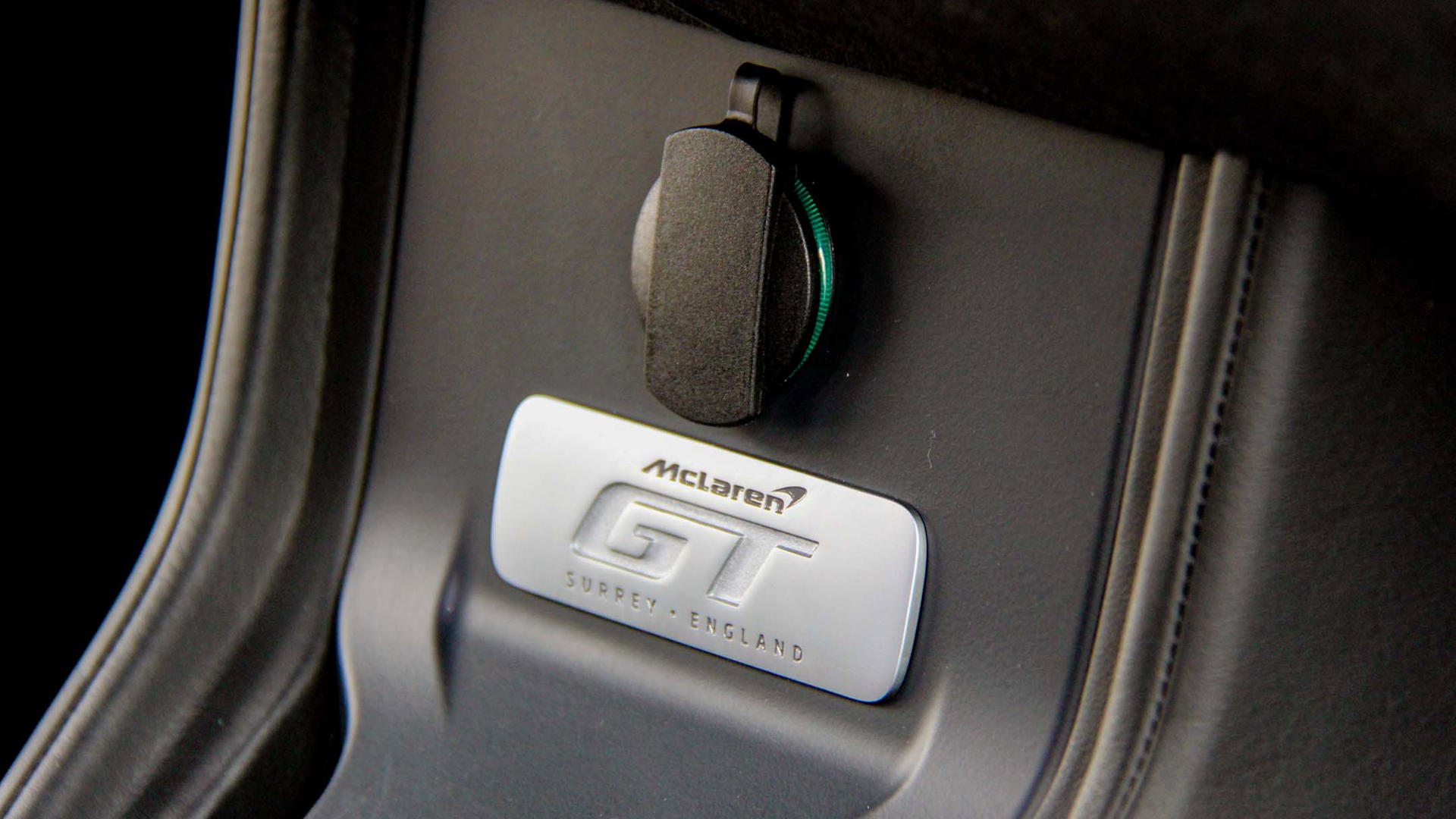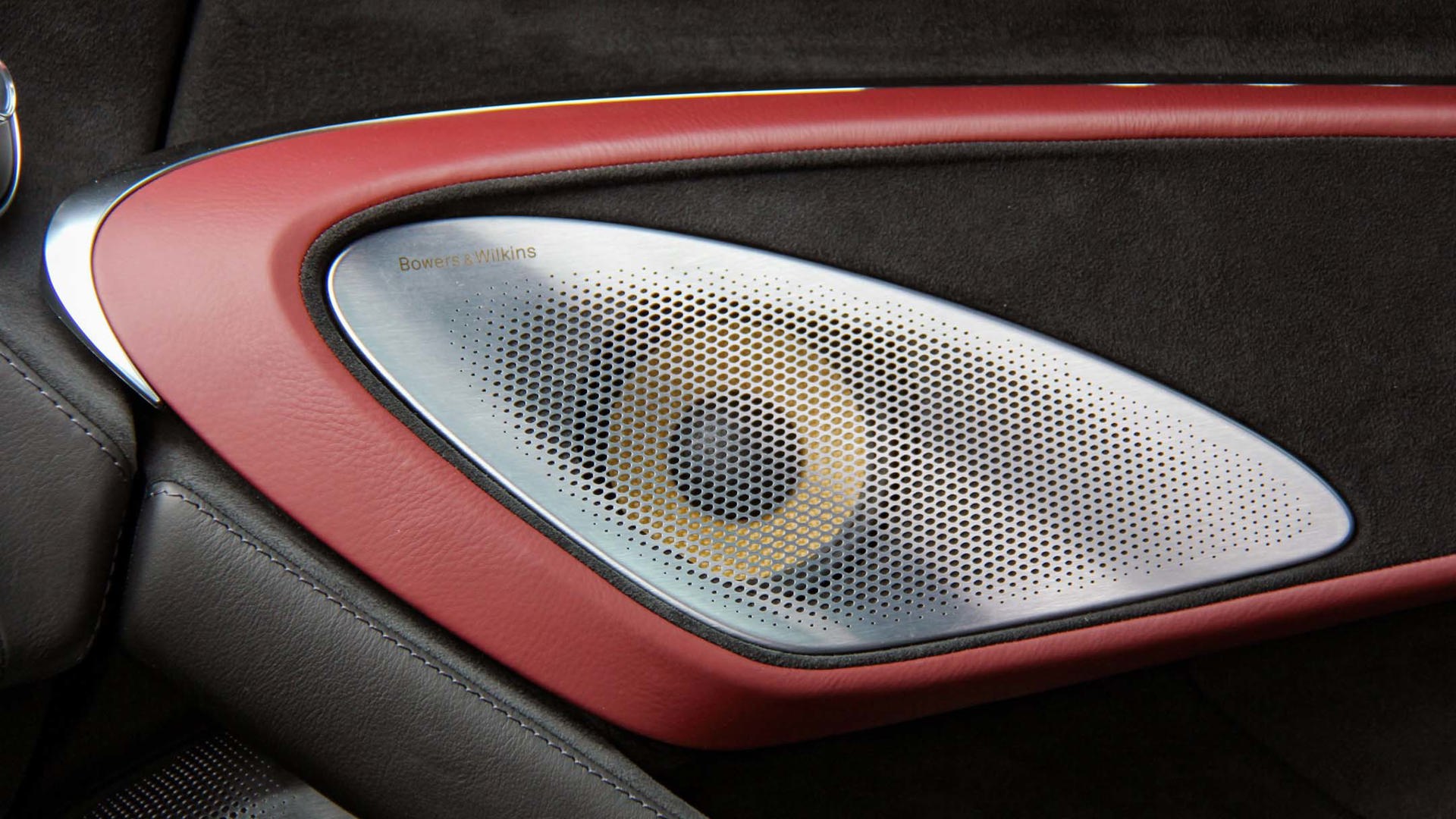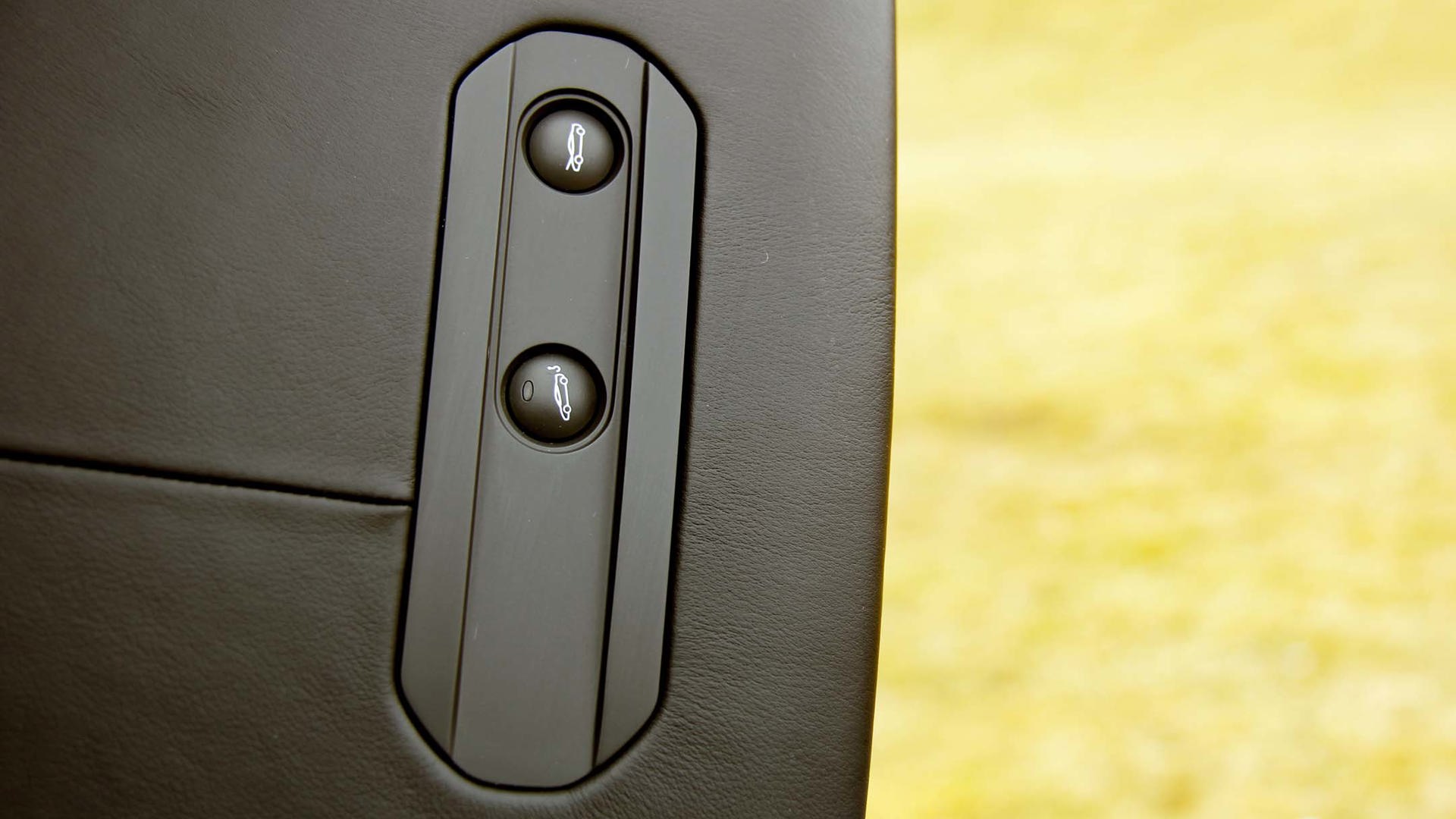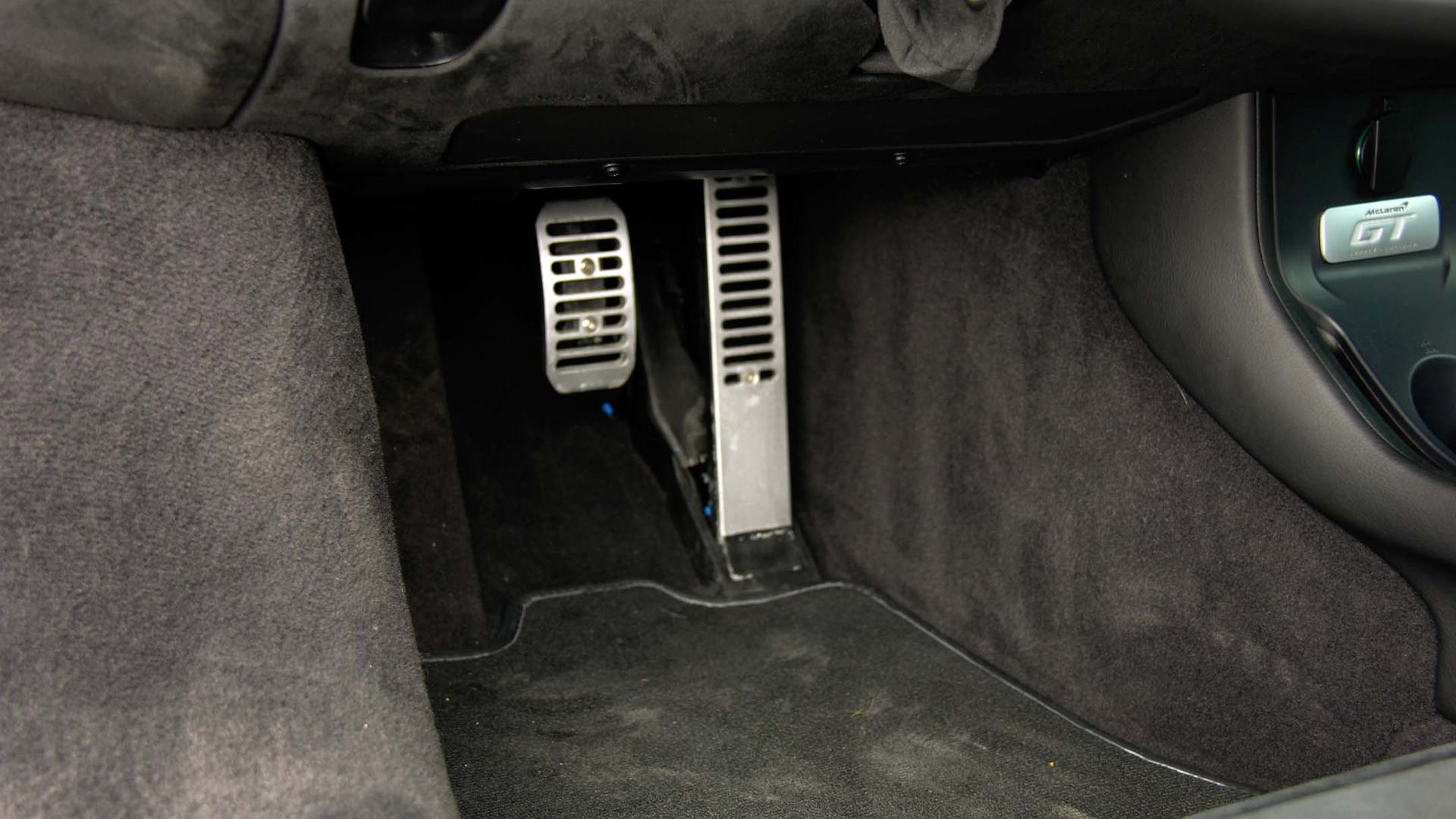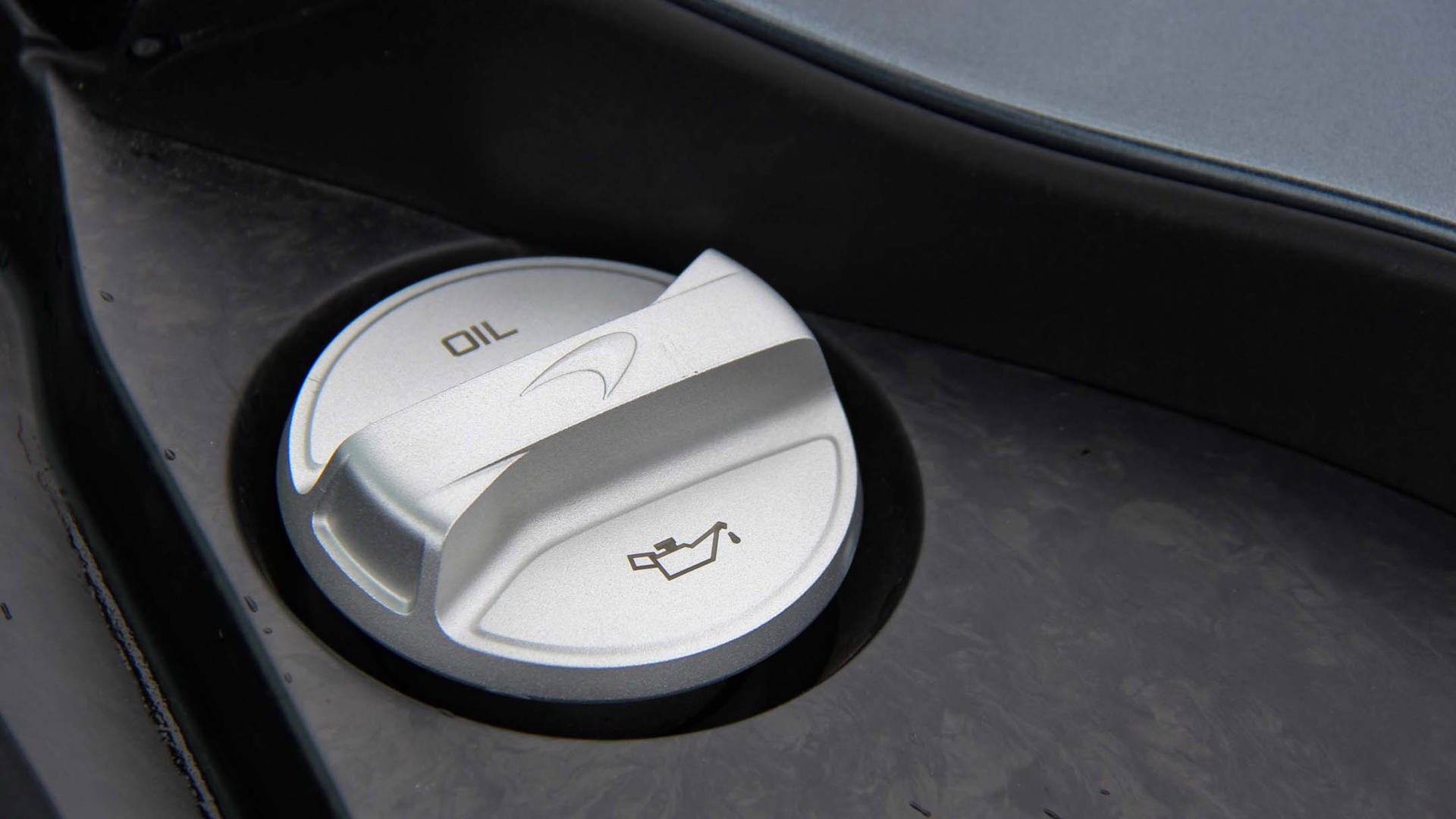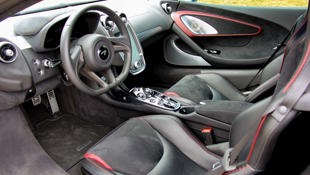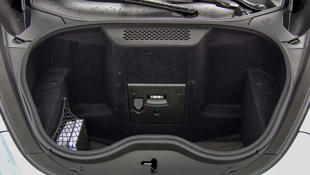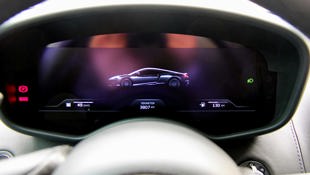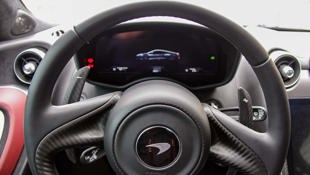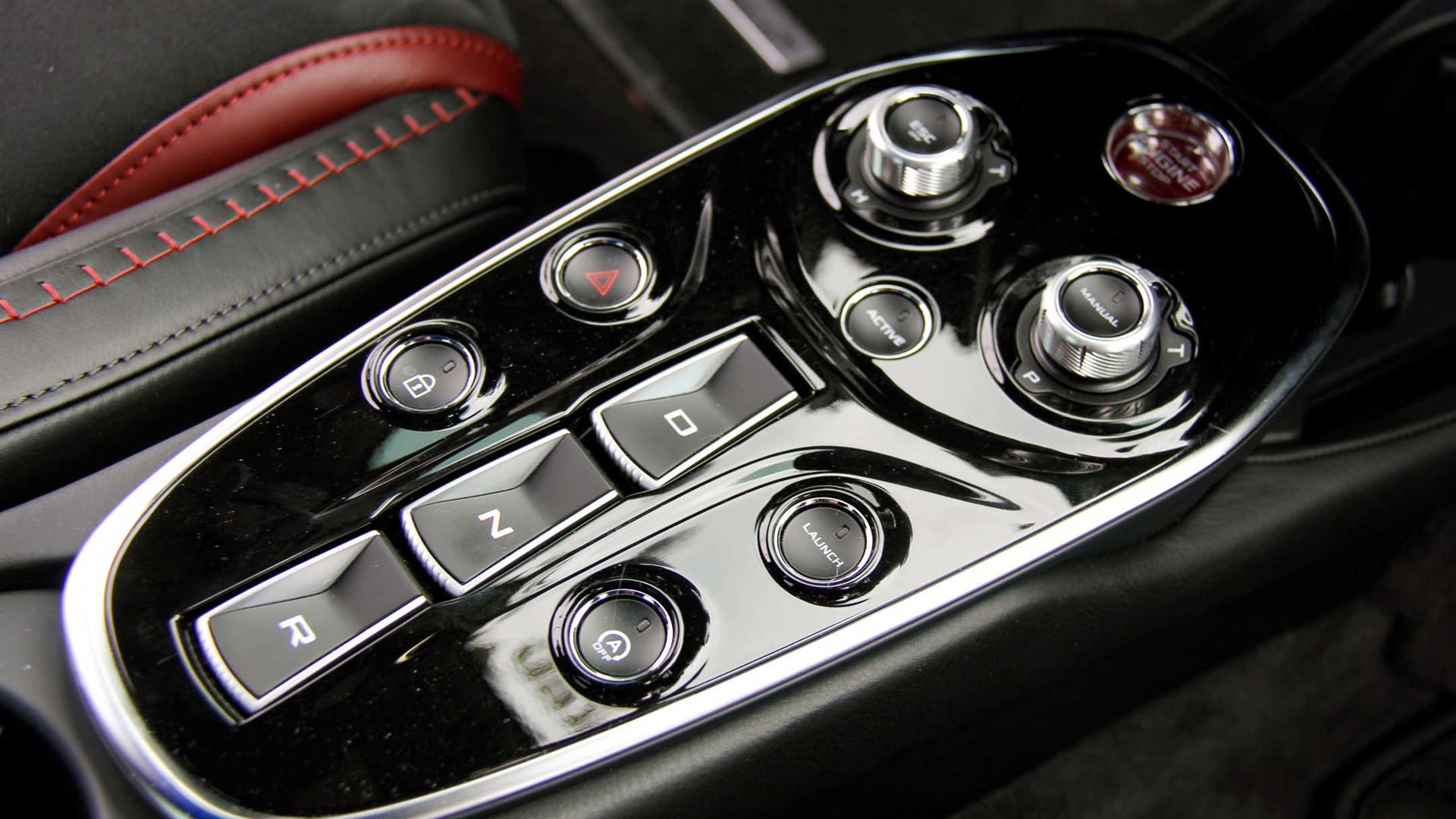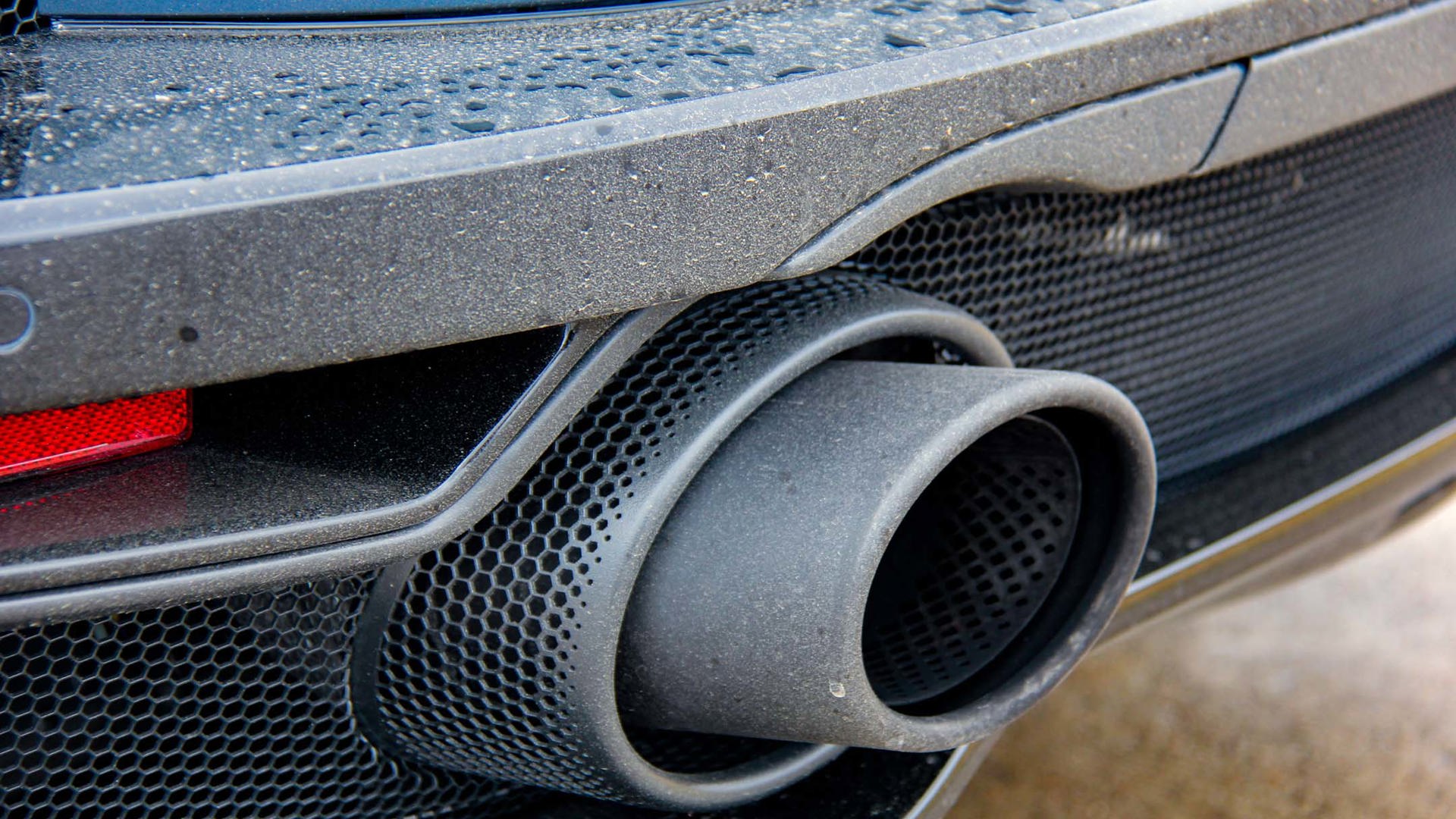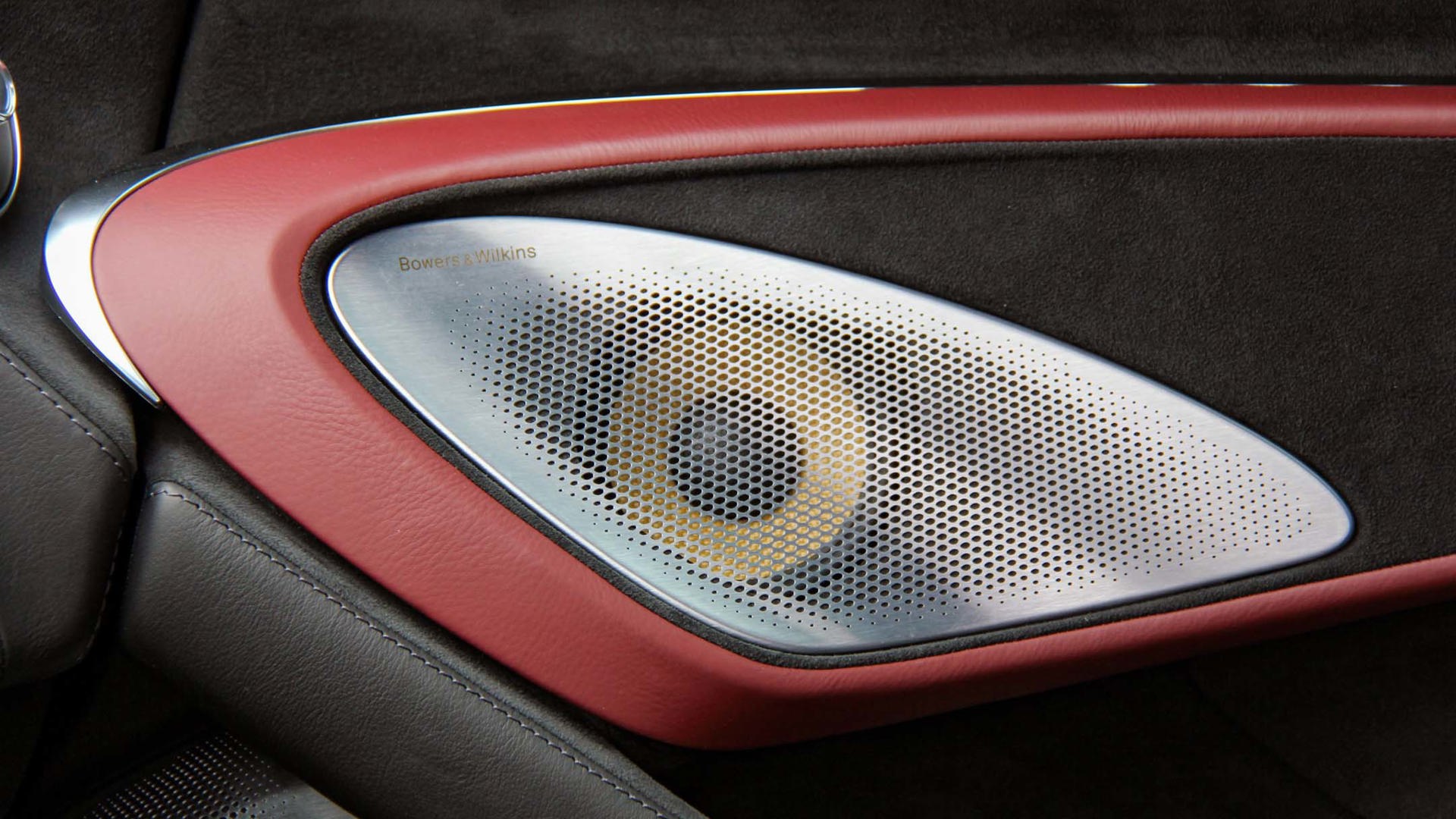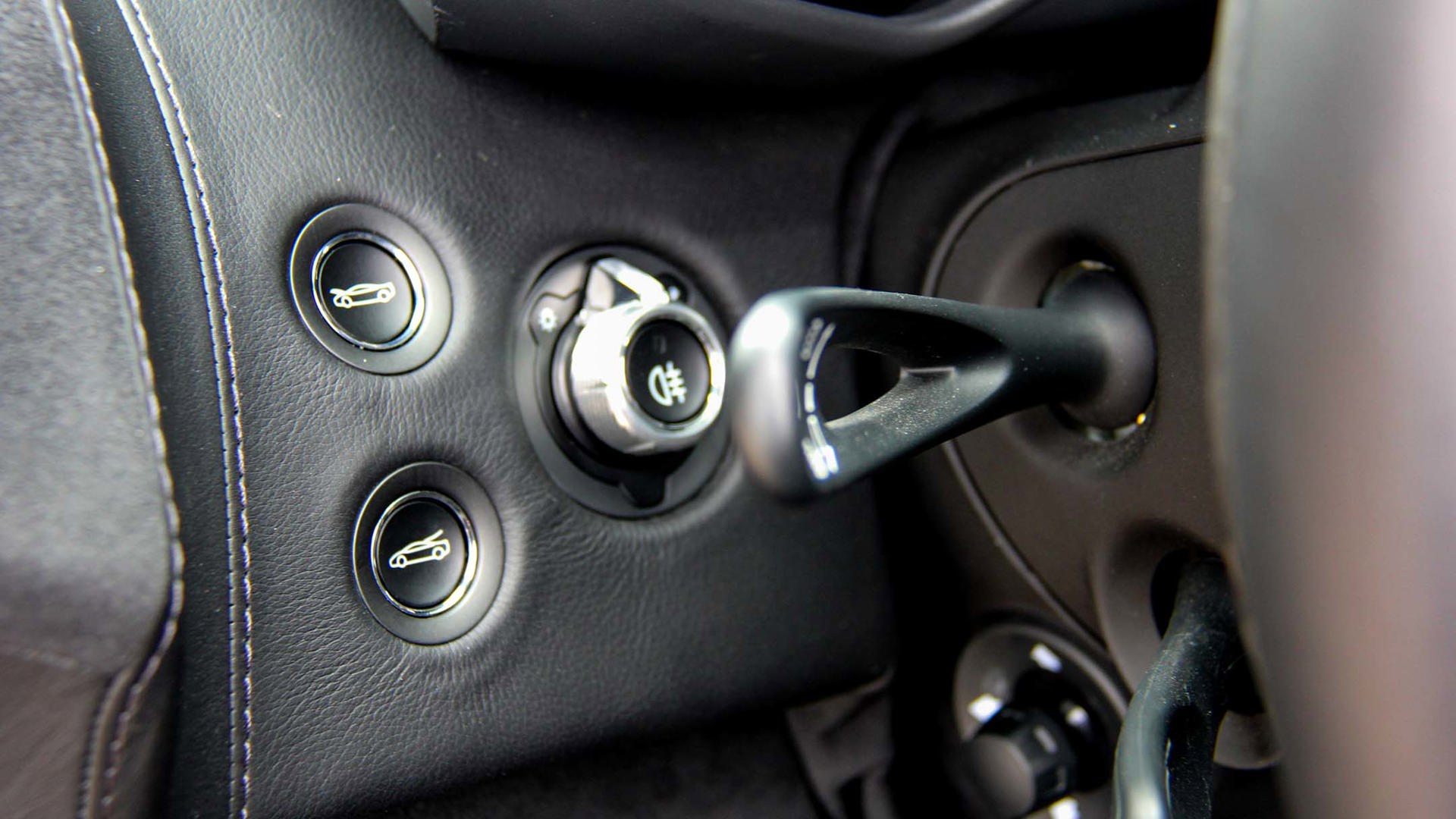Supercars captivate the imagination.
They feature prominently on many teenagers' bedroom walls and in hopeful dreams of winning the lottery. Their outlandish, futuristic styling and raucous, ethereal sounds are simply hypnotizing. Their purpose-driven engineering stretches boundaries, breaks barriers, and lends truth to the promise that anything is possible. To do so, however, sacrifices have to be made somewhere: boring things, like comfort, fuel economy, or cargo space.
The 2020 McLaren GT was built to be a more palatable and refined take on a supercar, thus taking on established grand tourers from the likes of Jaguar, Ferrari, Porsche, and Aston Martin. Despite many similarities to its existing stablemates, two-thirds of the GT is said to be unique in an effort to add comfort and practicality. The 570 GT followed a similar concept by softening an existing platform, but the GT takes it beyond that by offering more refinement and cargo capacity. In an effort to combine race-bred performance with sophisticated road manners, has McLaren successfully managed to combine the best of both worlds? It pains me to say this: I don’t think so.
Pure Imagination
The McLaren GT’s bodywork is sleek, graceful, and aerodynamic; more elegant than it is edgy, particularly when adorned in a subtle hue like Saros Grey. It no doubt still has an aura of the exotic. After all, it is a McLaren. It’s glorious-looking from all angles and gets paparazzi-type attention wherever it goes.
The driver’s door slowly swings up and out at the touch of a small panel on the car’s body. Negotiating ingress under the door and over the sill of the carbon-fibre tub into the narrow driver’s quarters takes some gymnastics.
With much borrowed from its 570 sibling, the interior places equal emphasis on business and pleasure. Fit and finish of leather, carbon fibre, and brushed aluminum accents provide a tangible impression of quality worthy of a sports car. The cabin does, however, feel rather cramped when occupied by two adults.
While most exotic cars sacrifice space for performance, the GT’s smaller turbos and modified carbon fibre passenger tub allow for a rear assembly that accommodates 419 L (14.8 cubic feet) of cargo space above the engine compartment. The abnormally shaped storage area is said to easily fit a couple sets of golf clubs or skis, or duffle bags – certainly substantially greater than most supercars, which can rarely accommodate more than a laptop. The front trunk adds an extra 150 L (5.3 cubic feet) of space.
Unlike most vehicles these days where the steering wheel is covered in dials, knobs, and buttons, the GT’s is all business to let the driver focus on the task at hand. That goes double if you’re wearing polarized sunglasses, which will filter out the central infotainment display, rendering it impossible to read. The electro-chromatic panoramic moonroof allows you to trace your finger from one side to the other to lighten or darken the large glass roof panel. It worked better in theory than in practice, particularly with gloves on. Surprisingly, the GT does feature several cupholders, as well as a convenient place to put your smartphone, though neither Apple CarPlay nor Android Auto are available.
Adjusting the driver’s seat first requires finding the mechanism to do so. Nope, not there. Not there either. Maybe it’s here… nope. The buttons to electronically adjust the seats are evidently located under the seat, below your right knee, and require some tactile exploration and practice to master.
Failure to Launch
Time to fire up the twin-turbocharged 4.0L V8! Depressing the firm brake pedal and pushing down the ignition button located on the centre console, I anxiously waited for the 612 horses located behind me to be unleashed.
Nothing.
Sitting for the next few minutes in what was beginning to feel like a six-figure paperweight, I waved the key fob around until the car detected it. The mid-mounted engine came to life, less a roar than a snarl, the exhaust note more civilized than sinister. The key fob didn’t take too long to be recognized, but this situation continued to plague me during my time with the car.
As with many supercars with low ground clearance, the GT offers a nose lift function, part of the optional Premium Package. The catch, however, is that it is operated by the cruise control lever. Engaging first gear by bringing in the right shift paddle with a robust and confident click, I slowly emerged from the dealership parking lot and activated the front nose lift function before carefully navigating several speed bumps. I then lowered the nose as I pulled into traffic.
Or so I thought.
Foot to the firewall with 465 lb-ft of torque at my disposal, the GT was inadvertently governed to 40 km/h as I fiddled with the cruise control lever. Fellow motorists in minivans and CUVs behind me honked their horns and gestured angrily with one finger as they sped by me until I was safely able to pull over and properly disengage the system.
With the cruise control sorted out, I merged onto the highway. Power is sent to the rear wheels via a seven-speed dual-clutch transmission. Under normal acceleration in automatic mode, the lag between gear shifts made my back leave the seat, lurching forward in a way I haven’t experienced since I drove a 70 hp Smart Fortwo in 2009. Switching to manual mode and swapping cogs myself thankfully brought about lightning-fast shifts.
Steering felt razor-sharp and precise, with superb feedback, as was the case with the carbon ceramic brakes. Low-end torque felt lacking, however, and turbo lag was very apparent until they spooled up. Once they finally did, power was smooth, robust, and seemingly unrelenting. Weighing 1,530 kg (3,373 lb), engaging launch control will (allegedly) send the GT to 100 km/h in 3.1 seconds.
Various traction control settings and drive modes are easily adjusted by twisting the tactile knobs on the centre console and initiated by pushing the Active button that brings the car to life. The GT gets recalibrated suspension, including softer springs and an anti-roll bar. The ride may be softer than other road-going McLarens, but it wasn’t supple or forgiving on poor roads. Road noise was evident at low speeds, as with wind noise on the highway. Of course, this GT tester was equipped with Pirelli SottoZero3 winter tires, which would account for some of the commotion heard in the cabin.
Long in Options, Short on Essentials
The Pioneer Package equipped in my tester includes Alcantara and leather with seating and headlining with contrasting accents, power-adjustable and heated memory seats, a leather power steering wheel, ambient lighting, and a leather luggage bay as well as interior surrounds and knobs in piano-gloss black and machined aluminum. The Premium Package includes a 12-speaker Bowers & Wilkins sound system, power-opening and soft-closing rear tailgate, LED lighting, folding heated side mirrors, and a privacy cover for the rear luggage compartment.
The aforementioned packages – combined with premium paint, a sport exhaust, carbon-ceramic brakes, carbon-fibre interior accents – account for an MSRP of $302,950. A lump of administration charges and protection items are listed for $8,163, including platinum tire and rim protection (with free nitrogen top-ups for one year, mind you), A/C tax, skid plates, stone guards, and a three-year theft-deterrent package, bringing the grand total to $311,113.
Despite the extensive equipment list, the GT falls well short on the technology front: Adaptive cruise, automatic emergency braking, lane-departure warning, and blind spot monitoring are all absent. It does feature the government-mandated back-up camera, but the rear view that pops up in the instrument cluster when reverse is engaged can only be seen when the wheel is perfectly straight, making it useless most of the time. Most vehicle functions are controlled through the unintuitive and painfully slow infotainment screen. After a couple days of futilely attempting to change settings or set preferences, I gave up entirely and kept it turned off.
Curbed Appeal
If you’re drawn to the McLaren 570 or 720 but they are too raw for your liking, then the GT may very well be what you’re looking for. It doesn’t look or drive like anything else on the road, and for those who don’t mind making numerous concessions, that alone may be reason enough to buy one.
The driving experience is no doubt stirring once you wind it up, but the GT is far less visceral than say, a Porsche 911 GT3 RS or Ferrari 488. It may be the tamest McLaren, but it’s also not nearly as refined a grand-touring machine as a Jaguar F-Type SVR. Or Aston Martin DB11. Or 911 Turbo. Or Audi R8 V10. Or Ferrari 812 Superfast, if you’ve got the additional means. It doesn’t feel ferocious like a supercar should and it isn’t comfortable, quiet, or approachable enough to be a grand touring car, leaving it somewhere in limbo, an exercise in compromise.
The GT feels like it would be better suited to the track where it could stretch its legs and prove its mettle, but then that would defeat its whole purpose. If you’re looking for something exotic but user-friendly – something that you can comfortably commute with every day of the week then take to the track on the weekend – you’d be better off buying a Porsche 911 or a rear-wheel-drive Audi R8 V10.
For the price of a McLaren GT, you could potentially buy both.

